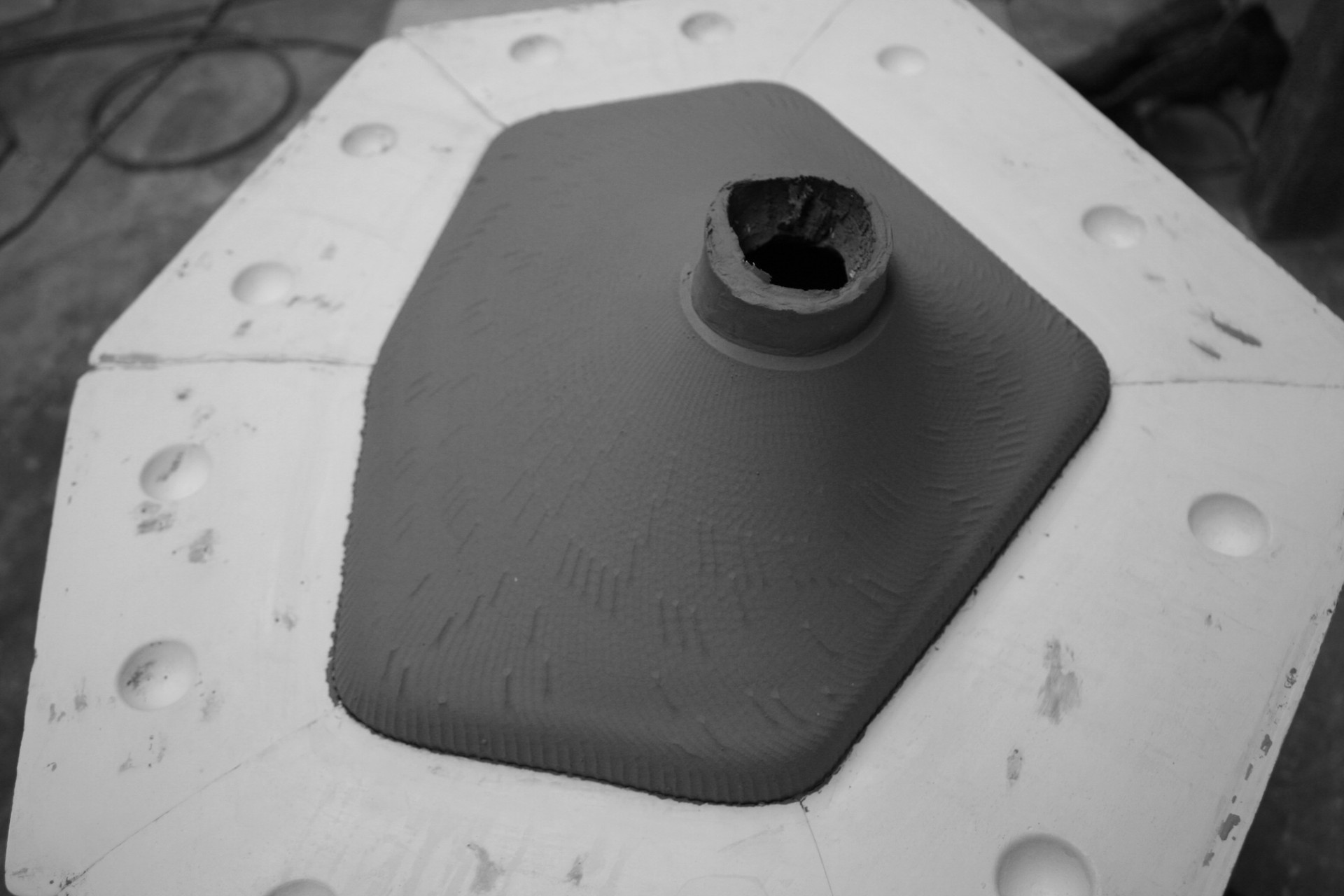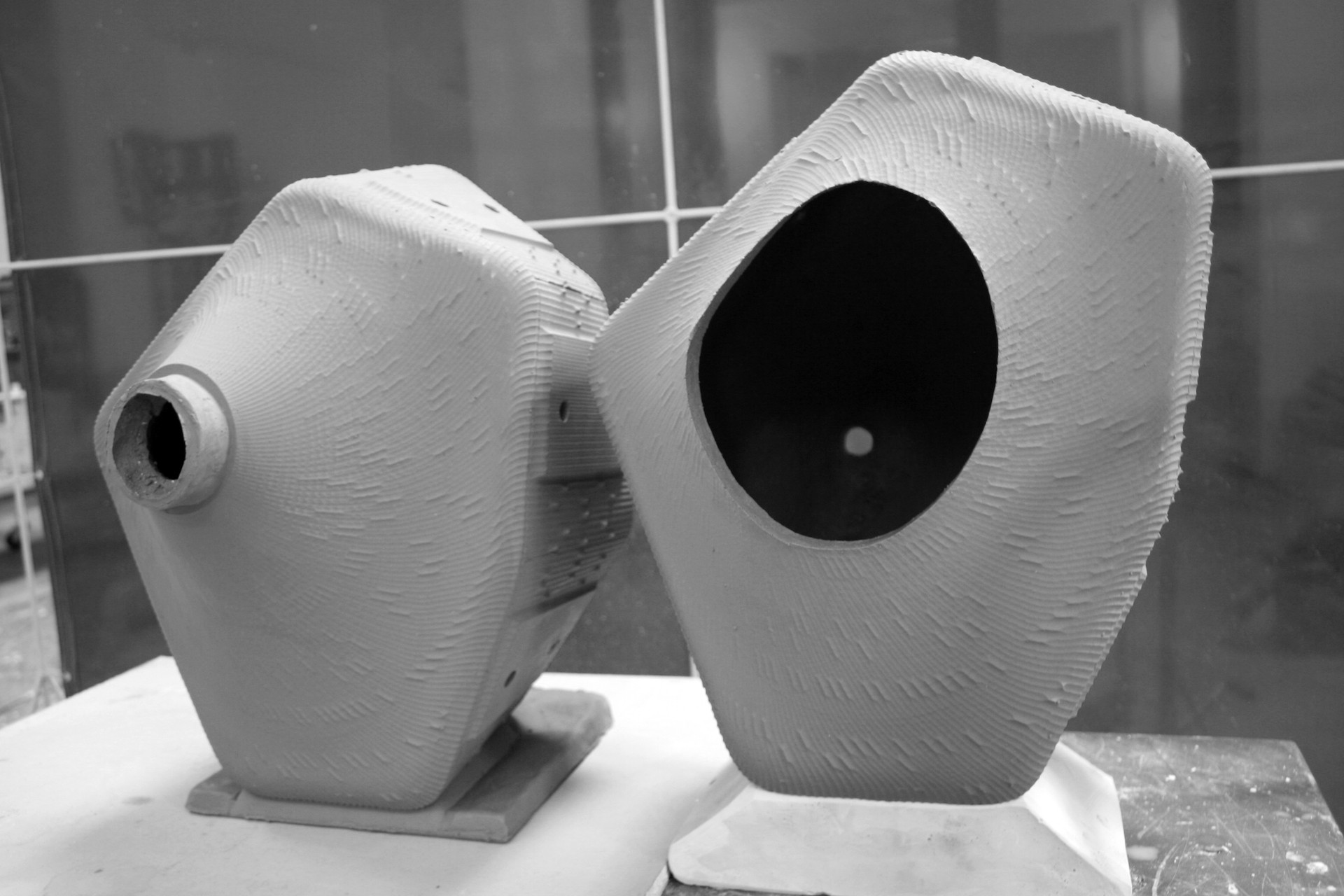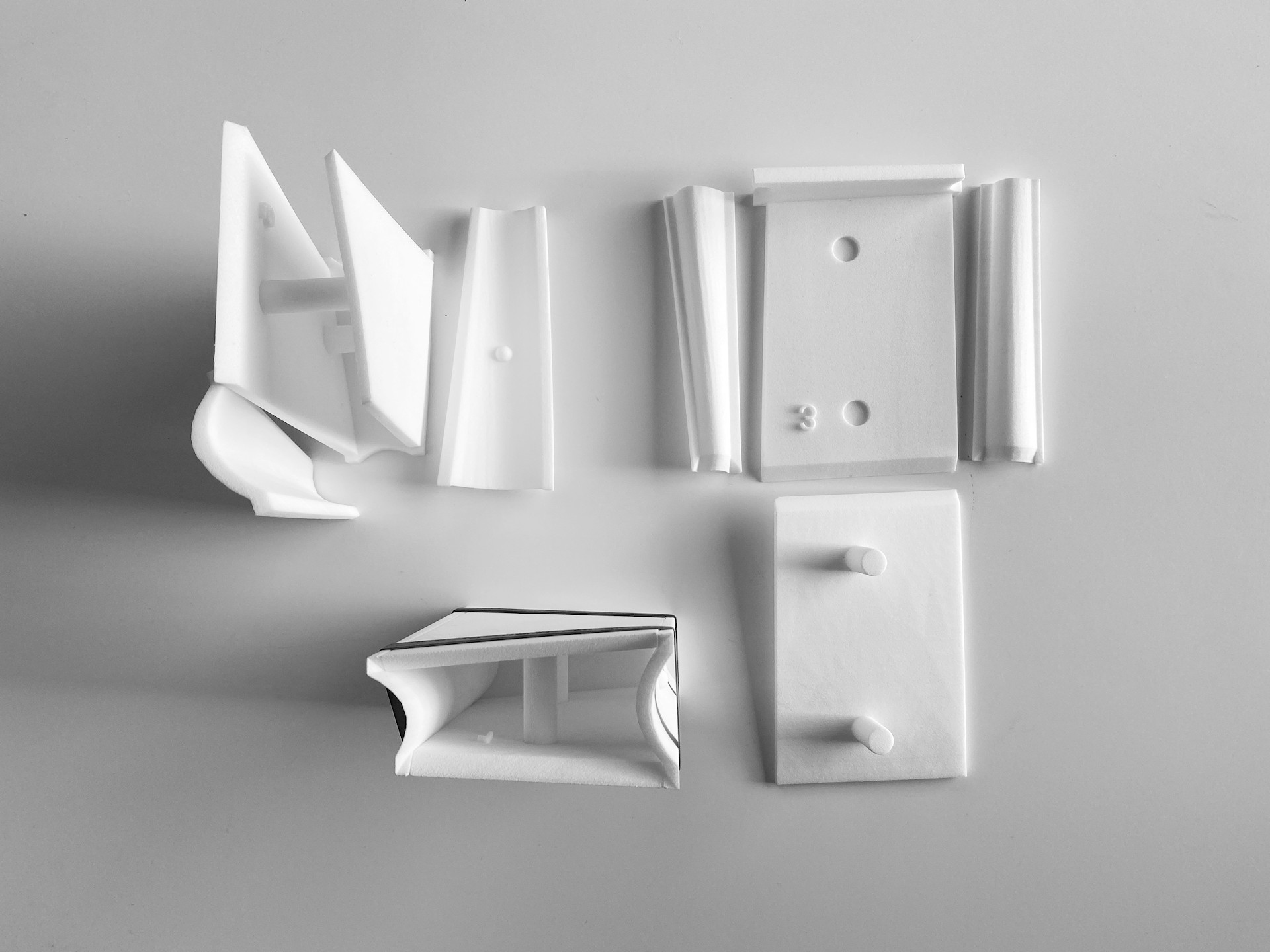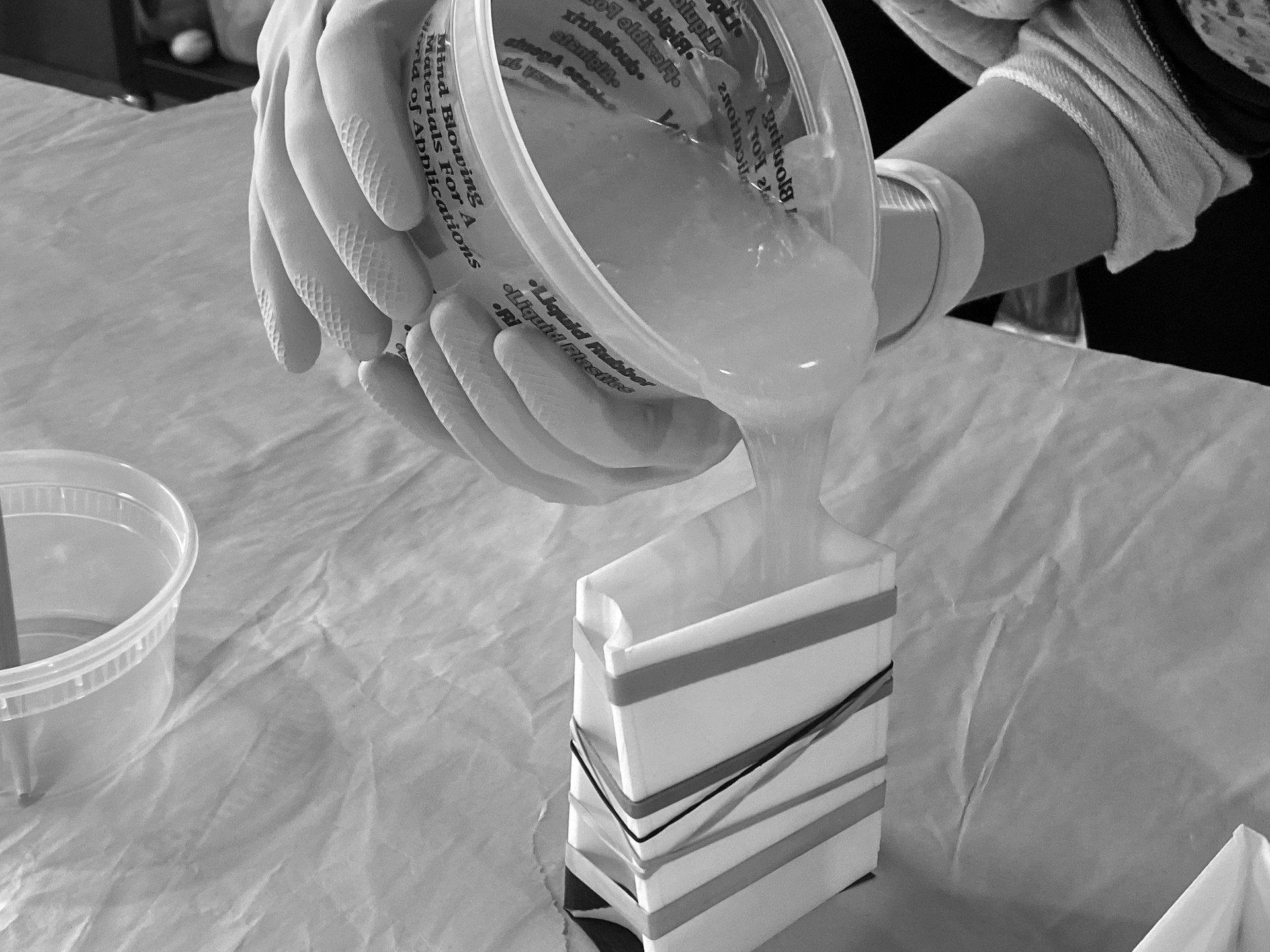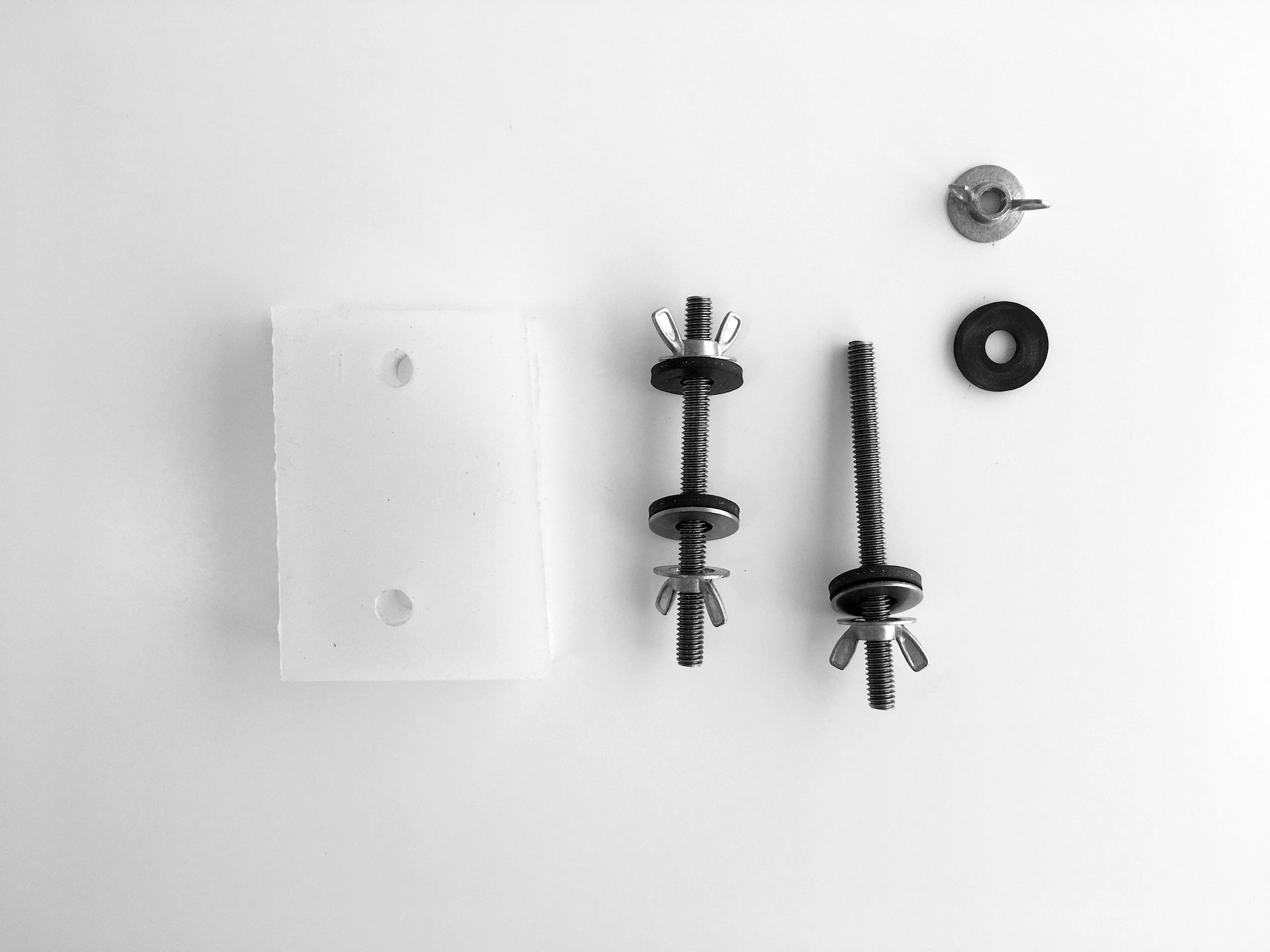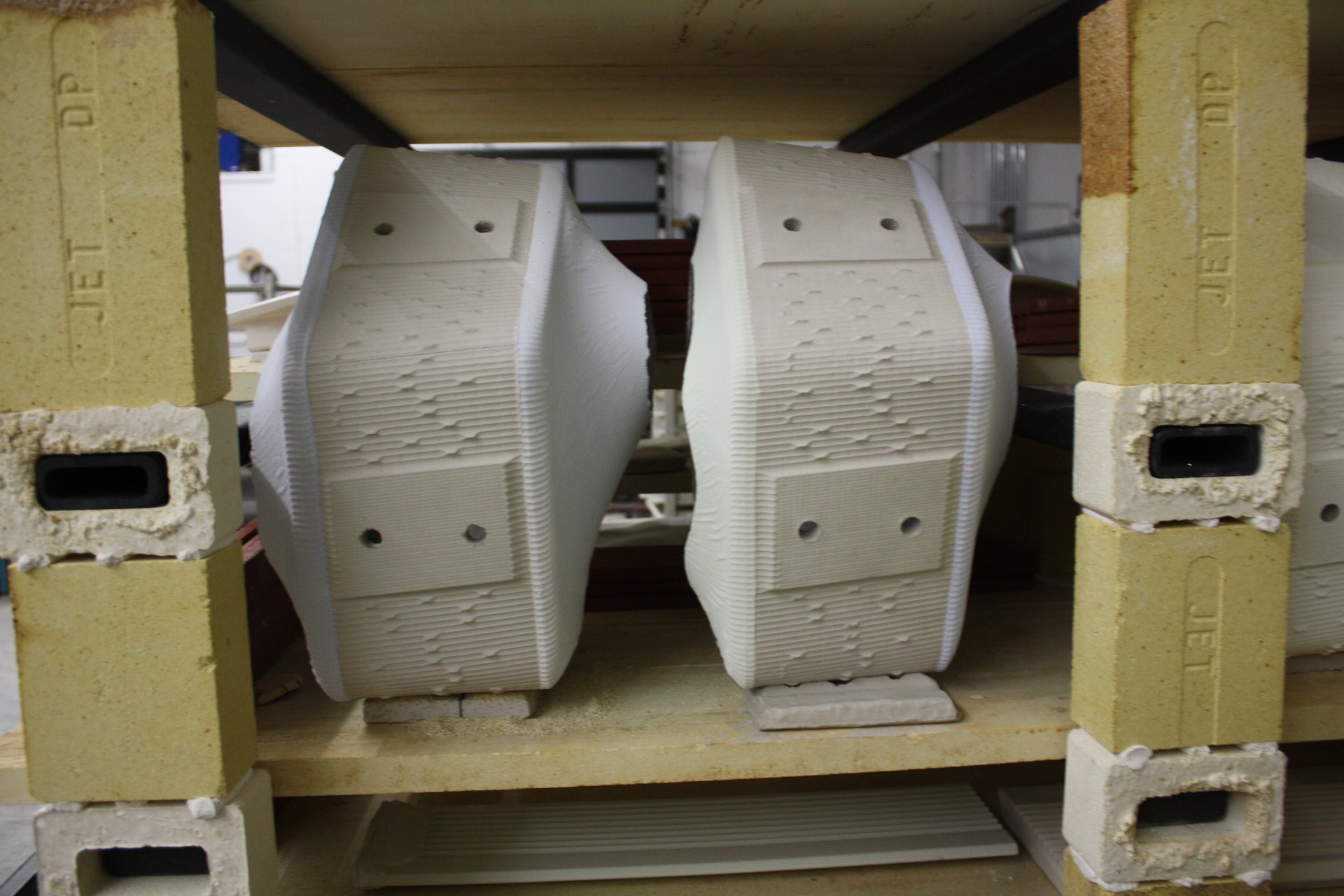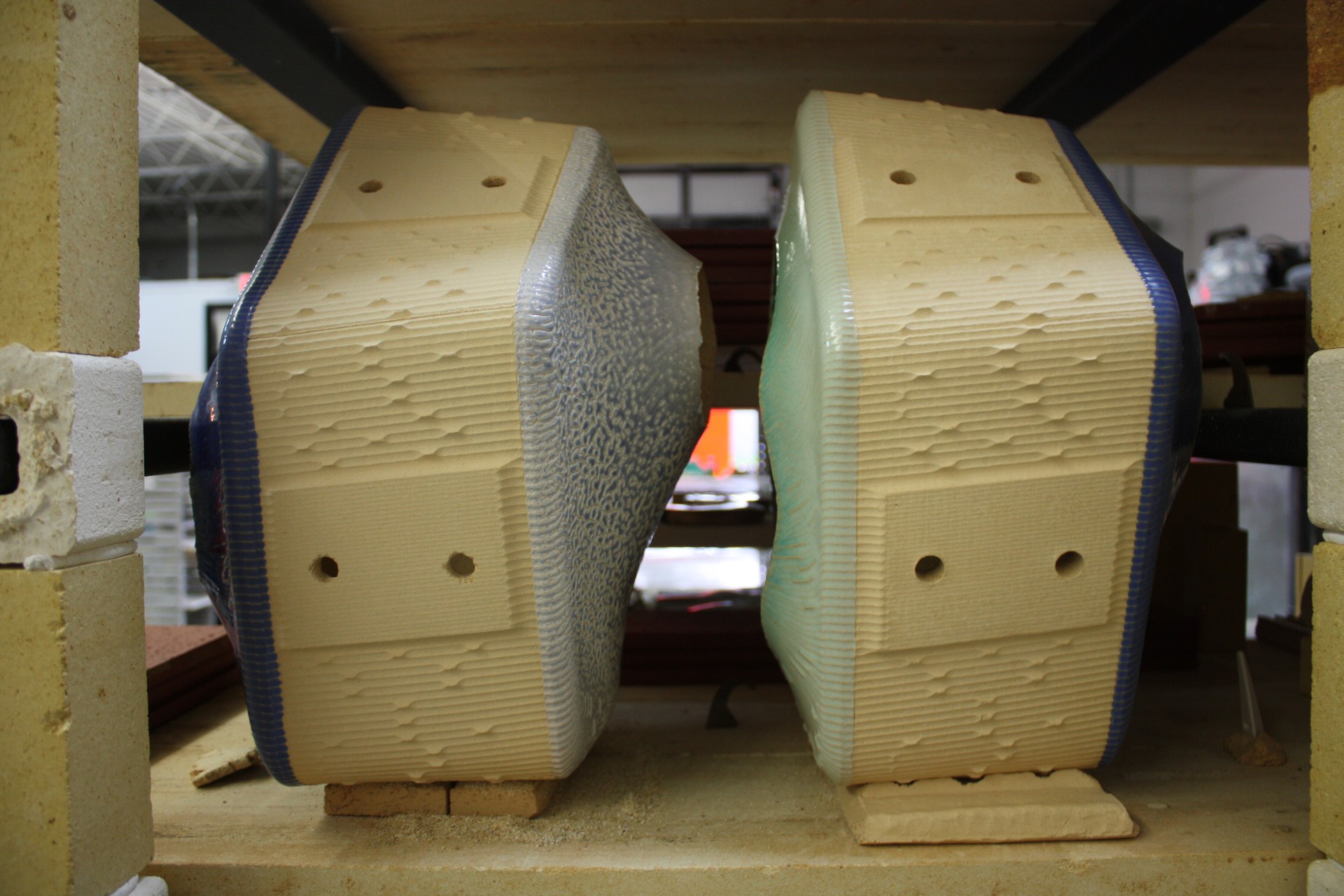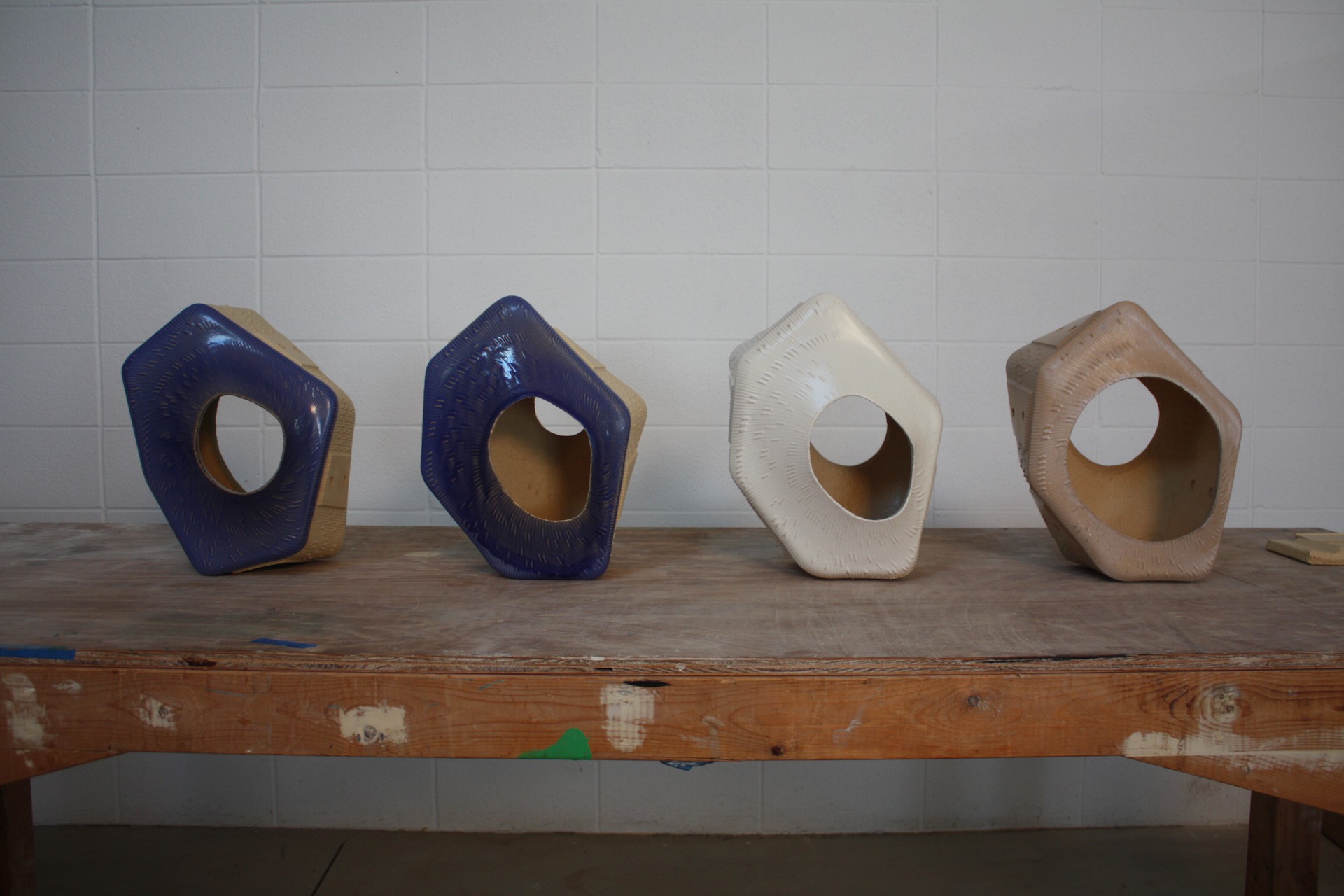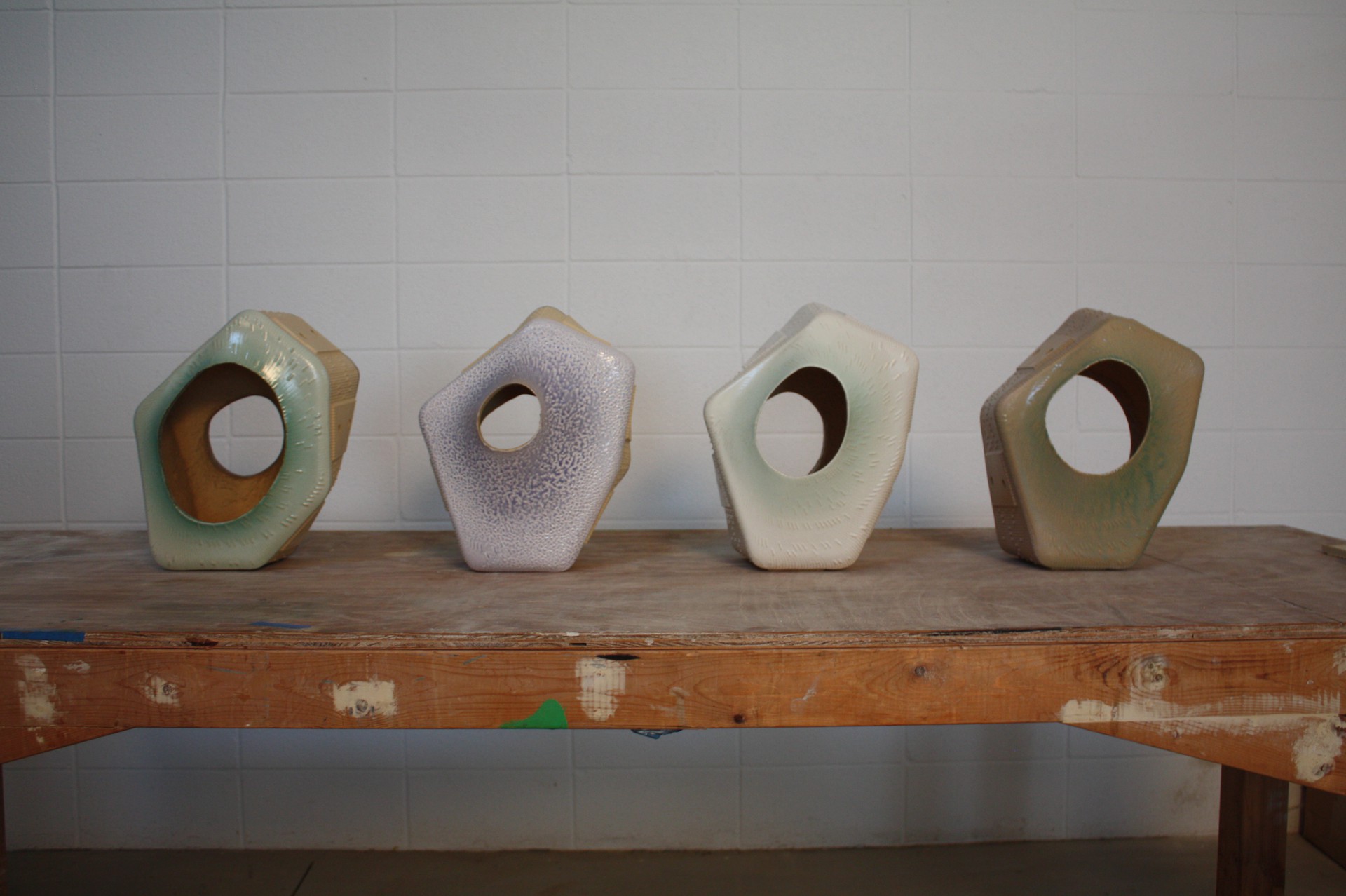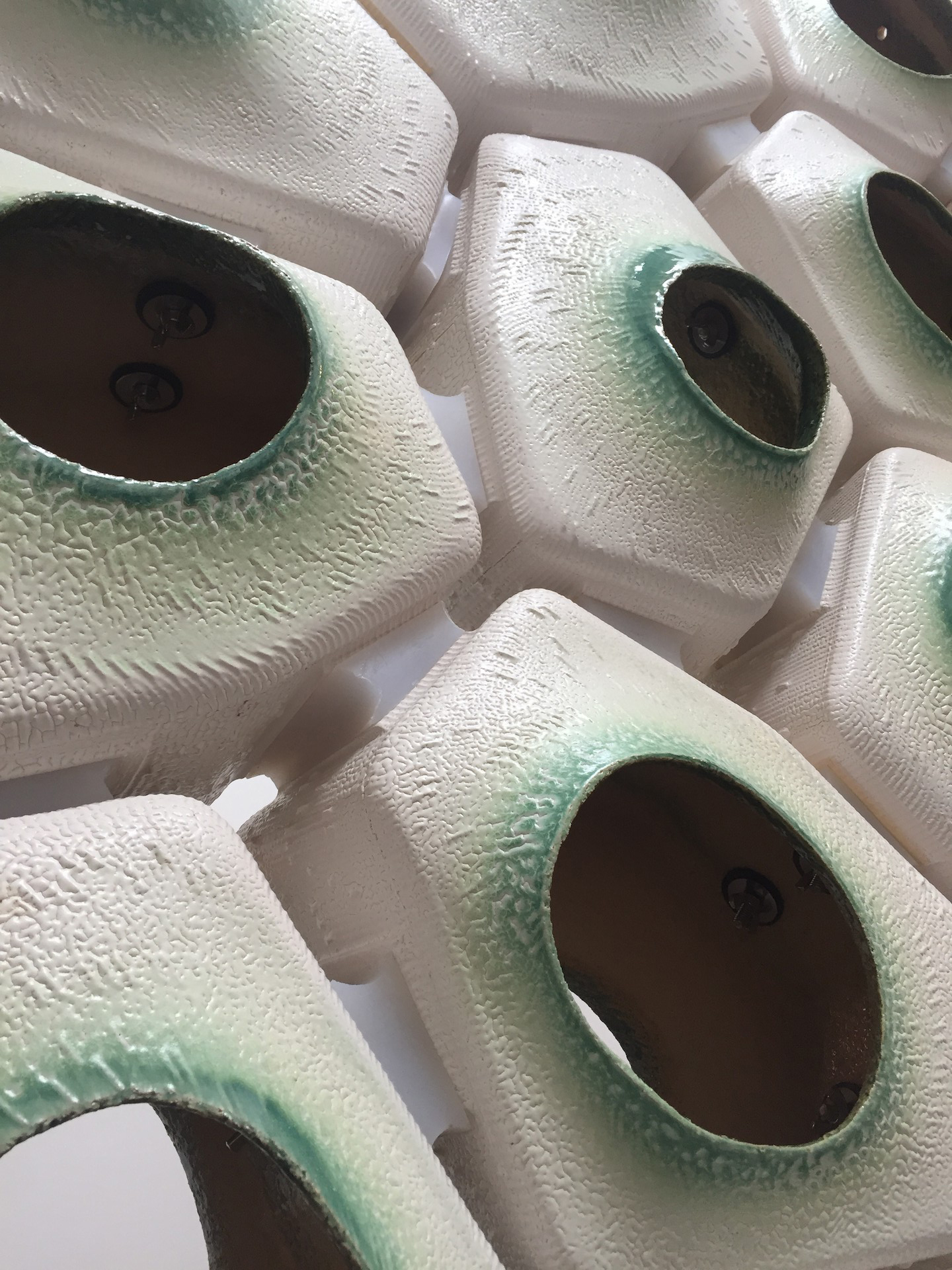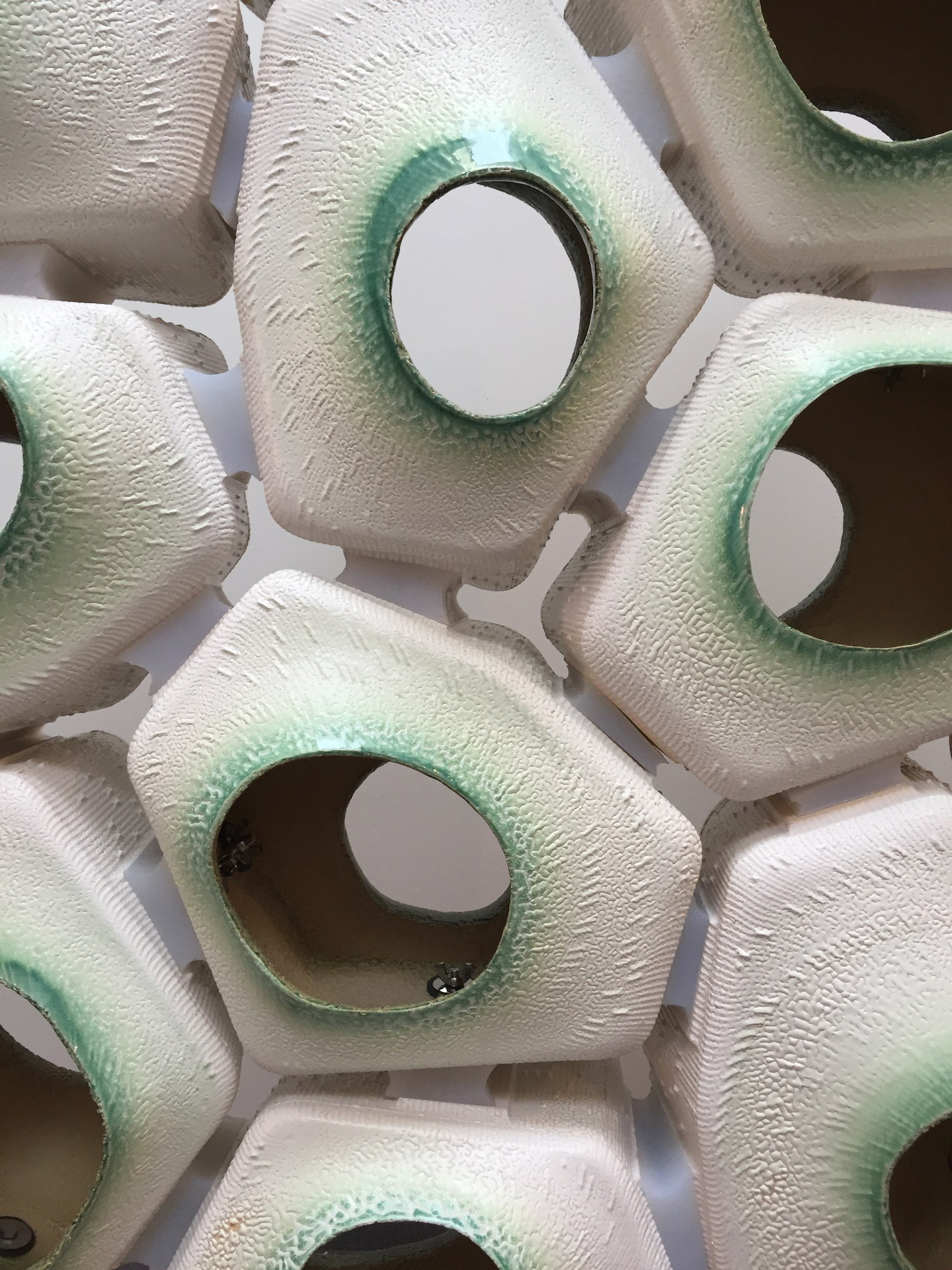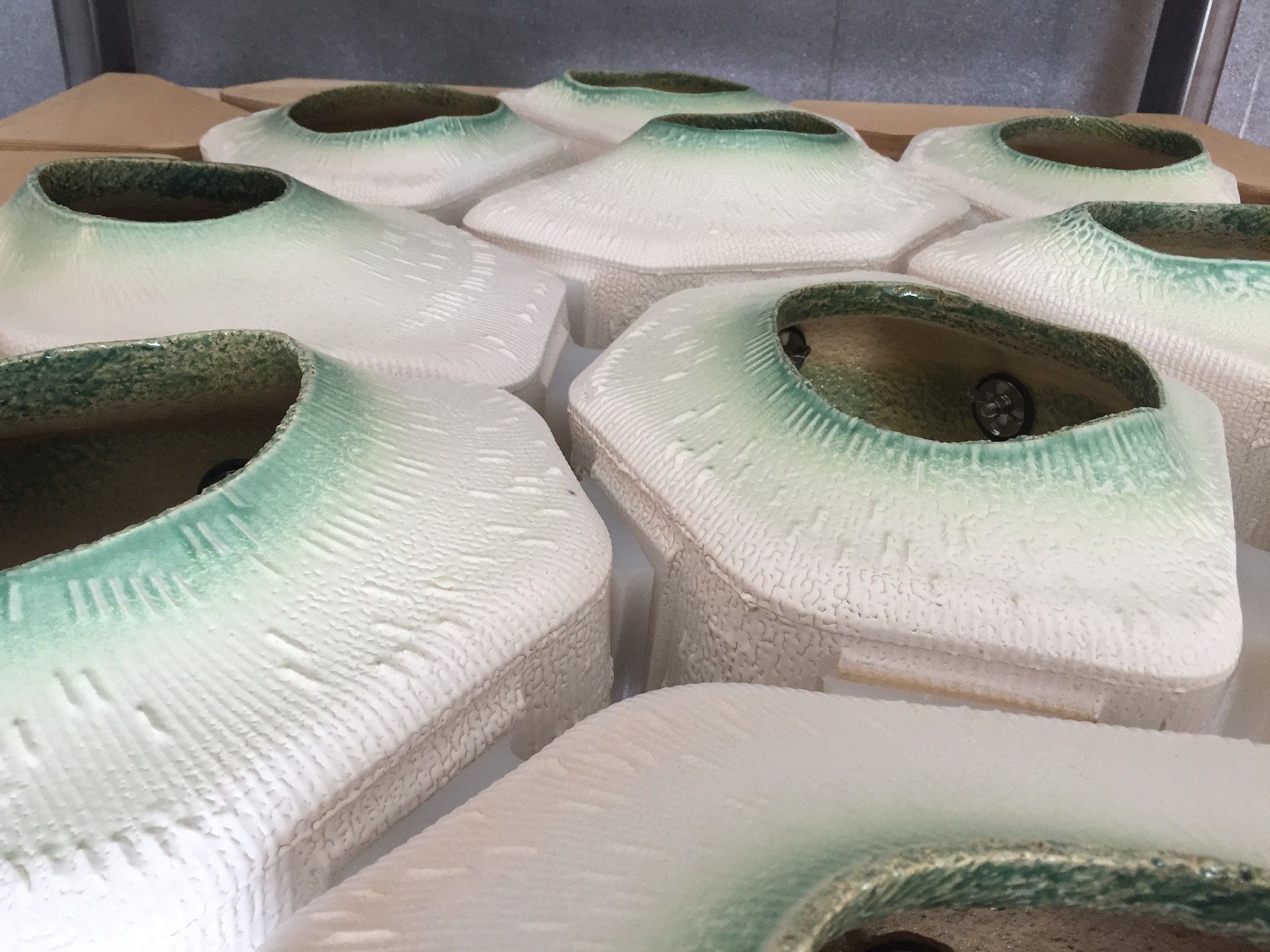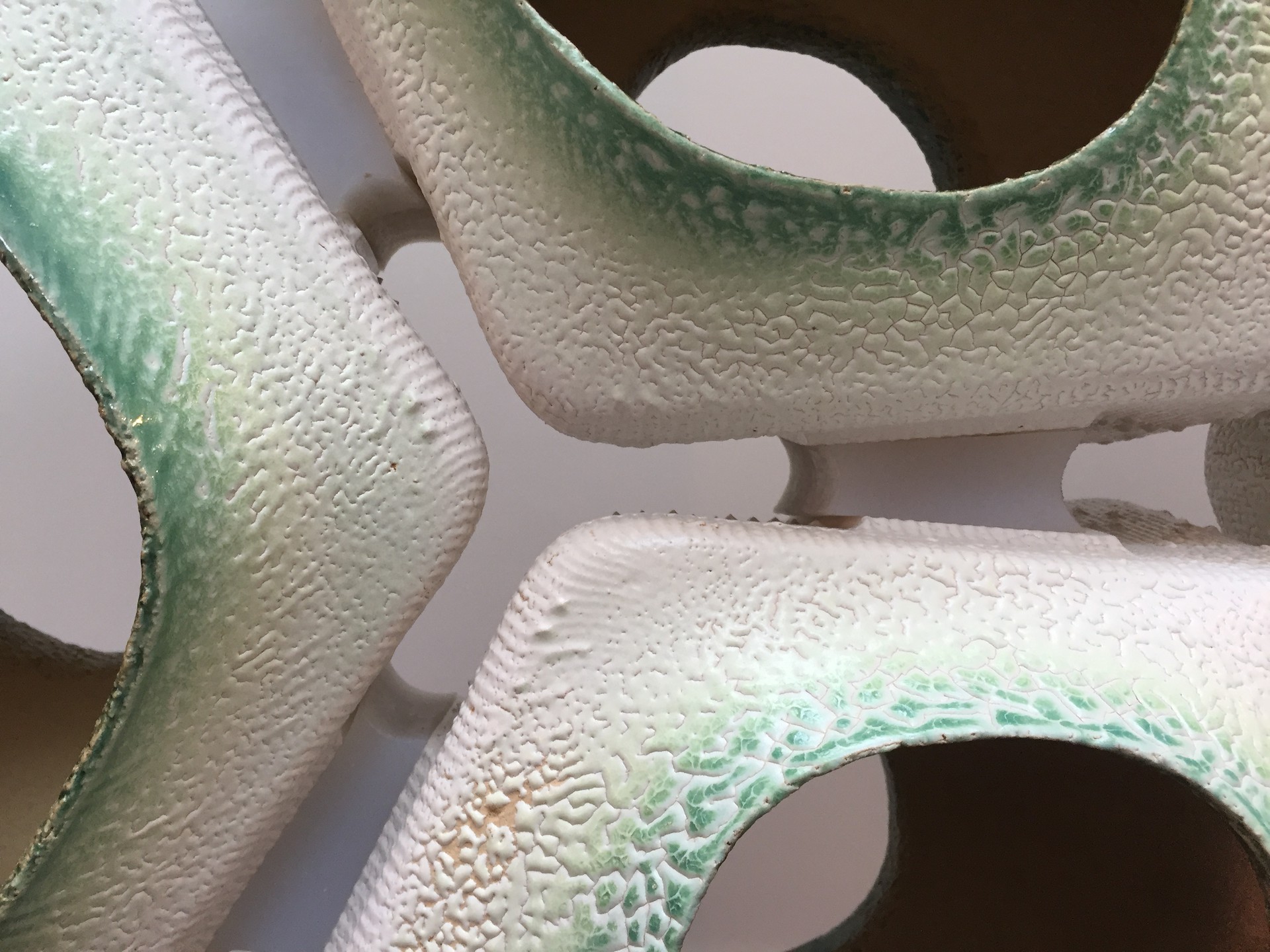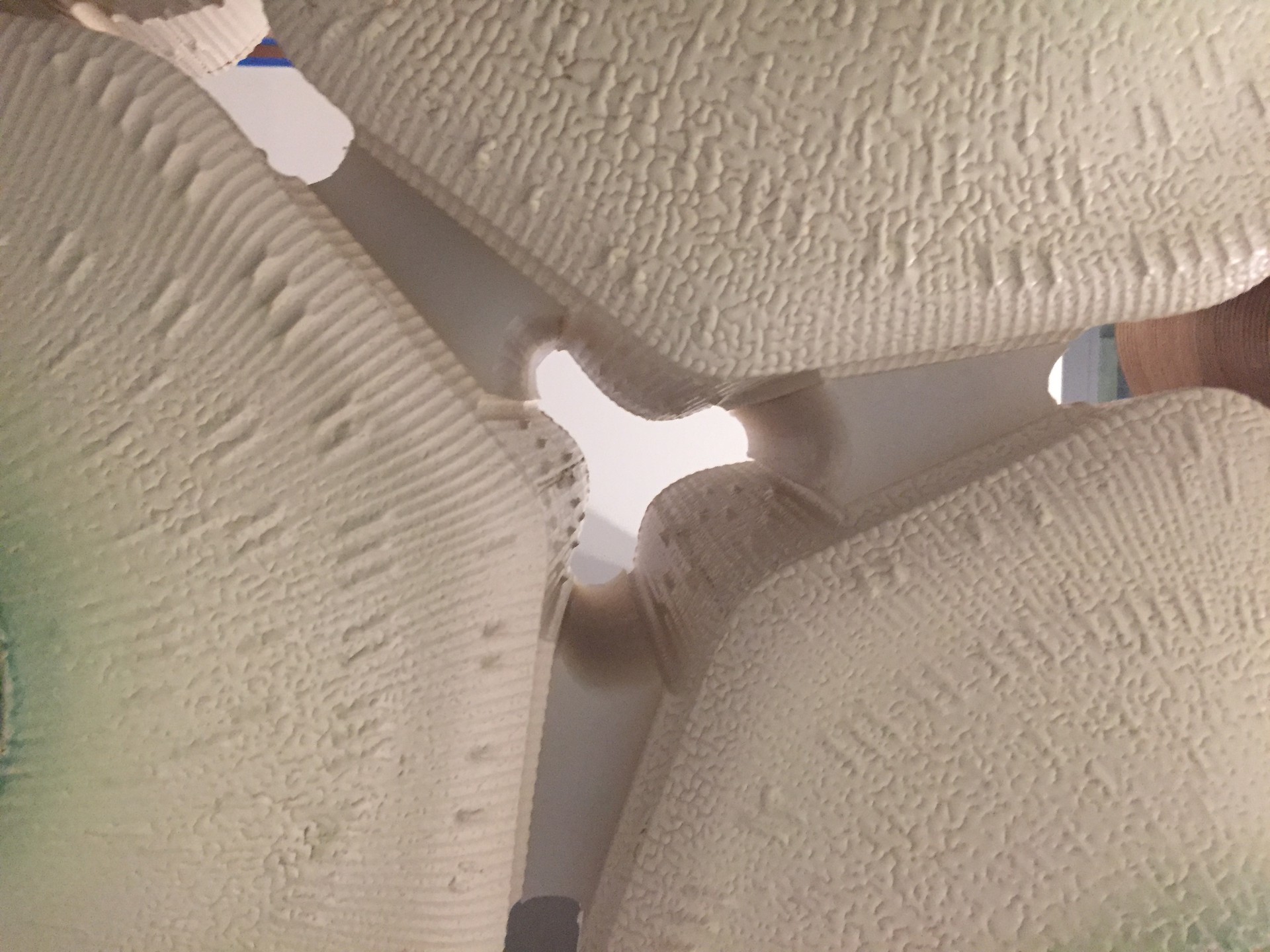ACAW: The Architectural Ceramic Assemblies Workshop
Project Credits: LMN (Team: Plamena Milusheva (as part of LMN and as an independent designer), Evgeniya Plotnikova, Alex Woodhouse, Scott Crawford (design principal), Stephen VanDyck (partner in charge))
WORKFLOWS
Rhino/Grasshopper
RhinoCAM/CNC mill
Adobe Illustrator
Adobe Photoshop
VRay
ACAW is a hands-on research and development workshop for architects and facade engineers to explore the use of terra cotta in high-performance facade design. The workshop is organized and supported by Boston Valley Terra Cotta and the University at Buffalo School of Architecture and Planning.
CHALLENGE:
Architects don’t understand the full potential of terra cotta and how they can explore its manufacturing process for unique design opportunities.
DESIGN QUESTION:
How can we generate three-dimensionality and visual complexity from a single, repeatable module?
RESEARCH QUESTIONS:
What types of geometries could lend themselves to variable patterning?
What are ways to generate volumetric modules through the existing Boston Valley manufacturing processes?
What parts of the production process can inform the final design?
SOLUTON:
Our team developed a slip cast ceramic module that aggregates to create a permeable partition. The concept for the project was informed both by mathematical patterns for hexagonal tiling as well as elements found in nature. We developed a wall system that has a strong volumetric quality to it, where the individual modules act as vessels for a range of elements: water, plant life, or small animal habitat. The goal of the final result was to derive the major aesthetic elements from the manufacturing process. This was the driving force between design decisions for the form, texturing, and glazing strategies for the project.
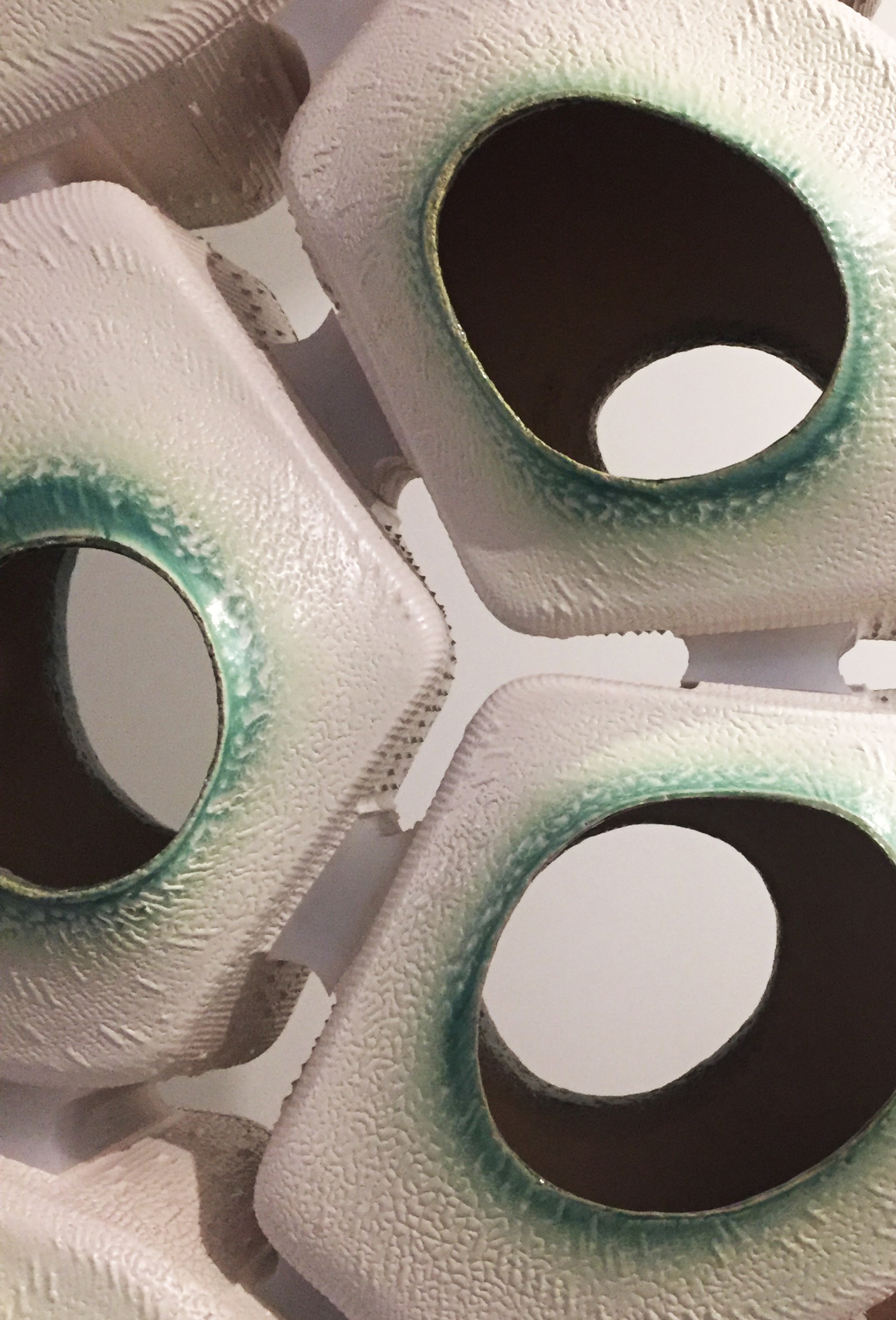
Image by Alex Woodhouse / LMN
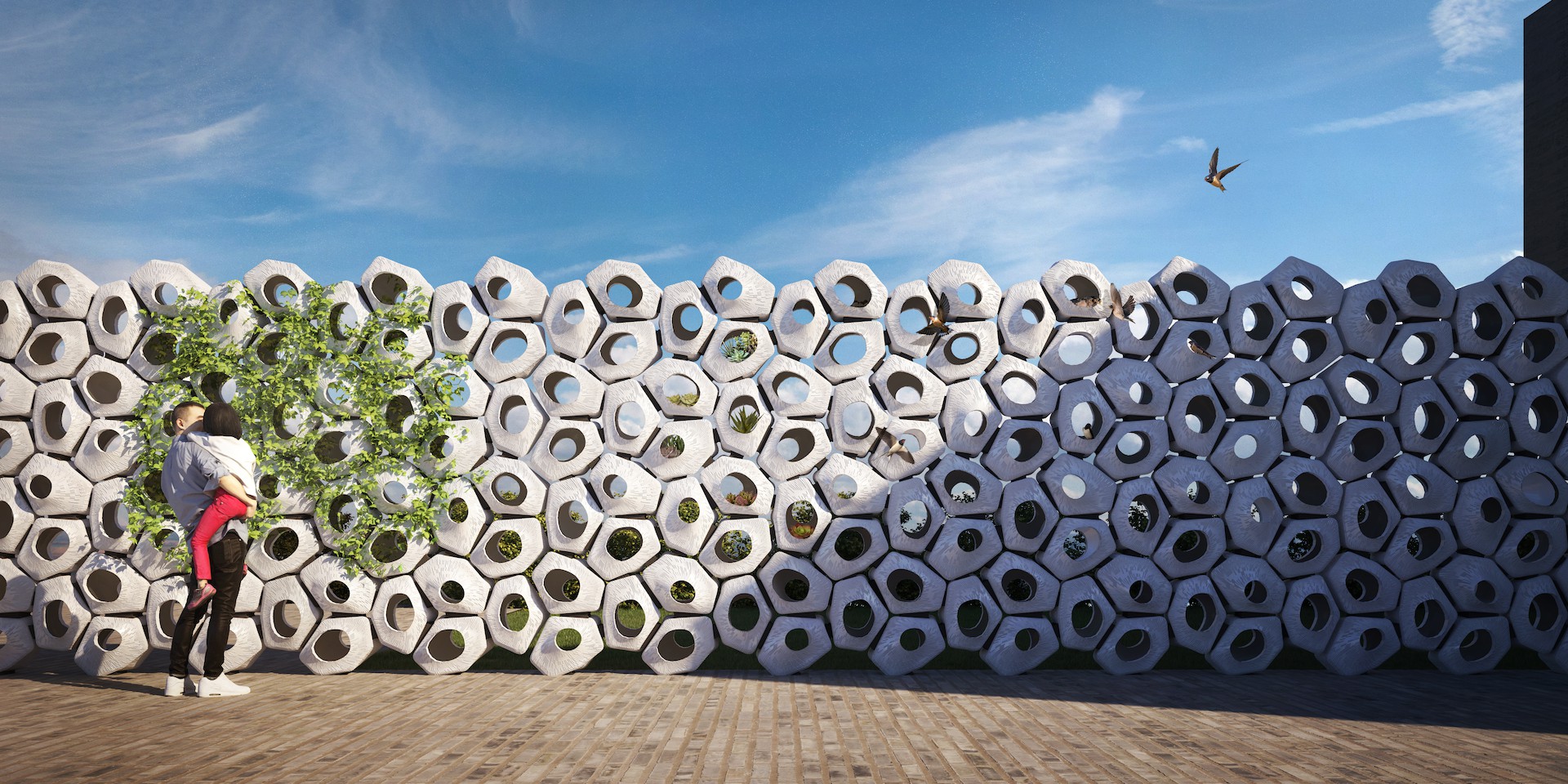
Image by Michael Day and Alex Woodhouse / LMN
For this project, the main goal was to push traditional methods of slip casting production. We approached this along two tracks: developing a volumetric geometry rather than a planar tiling and experimenting with surface texture and glazing combinations.
We wanted to develop a texture for the surface of the module that would result in a unique effect when combined with glaze. We went through several partial prototypes to test out different textures. The texturing was designed as part of the CNC milling process through the development of custom toolpaths.
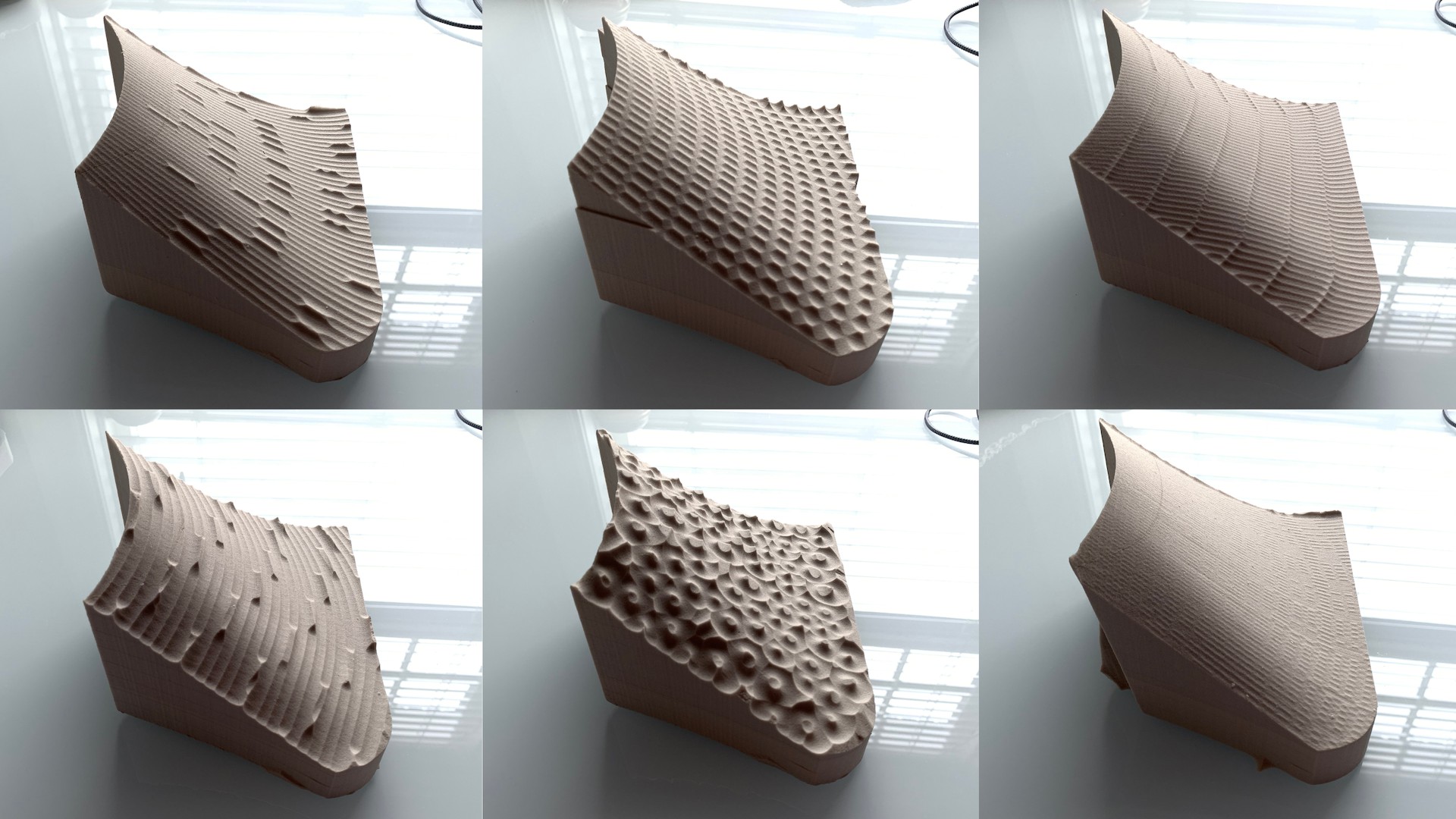
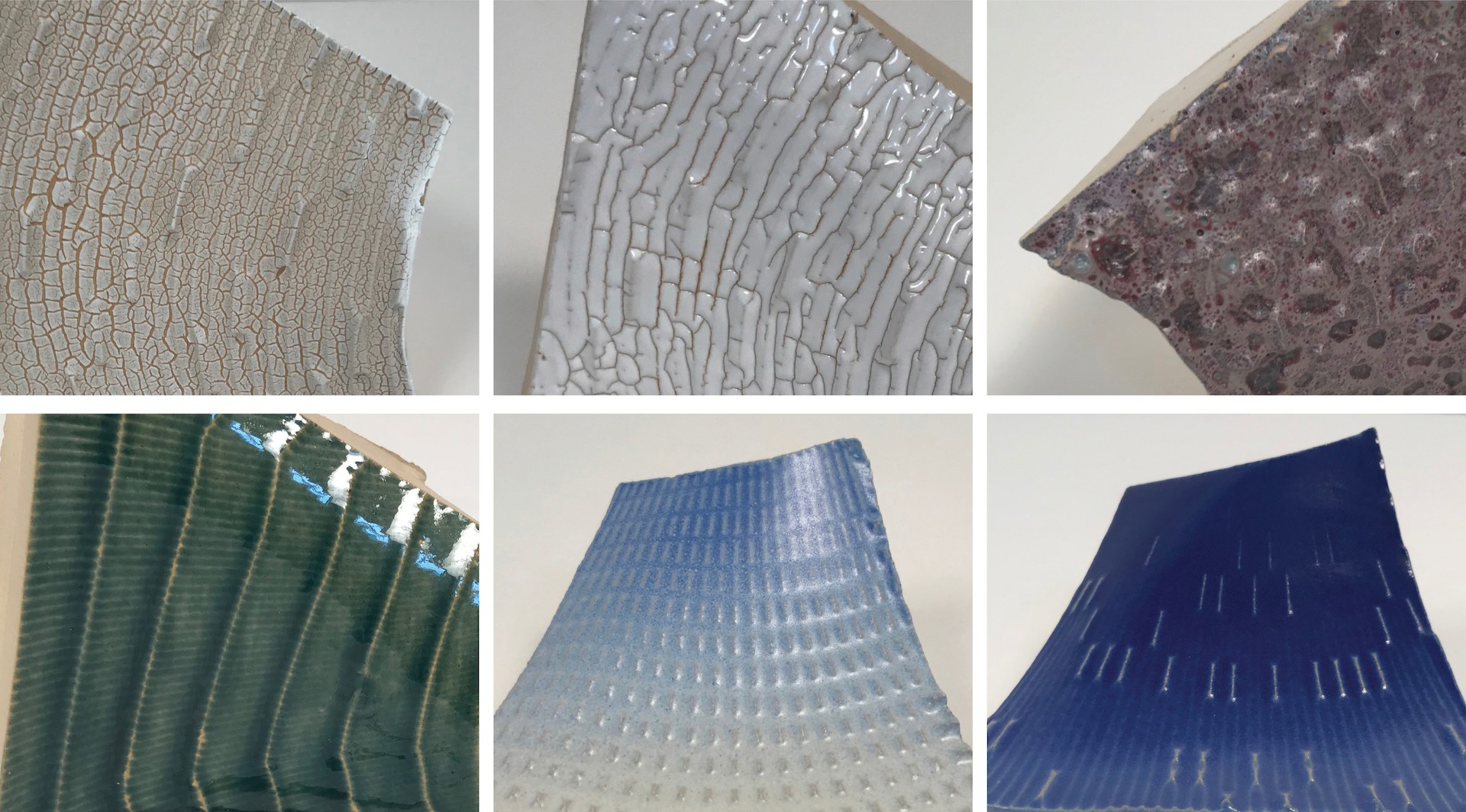
Images by Andy Brayman / The Matter Factory
Once we selected the general direction of the tool path pattern, we digitally studied variations of it on the full 3D geometry. We were able to get a visual approximation of the final result by running simulations in RhinoCAM.
Before doing the full run we did a few partial mills to study some of the more challenging areas, such as the transition between the face pieces and the middle section of the full module. Because the direction of the bit changes in relation to the material orientation, this detail required more testing and refinement to develop correctly.
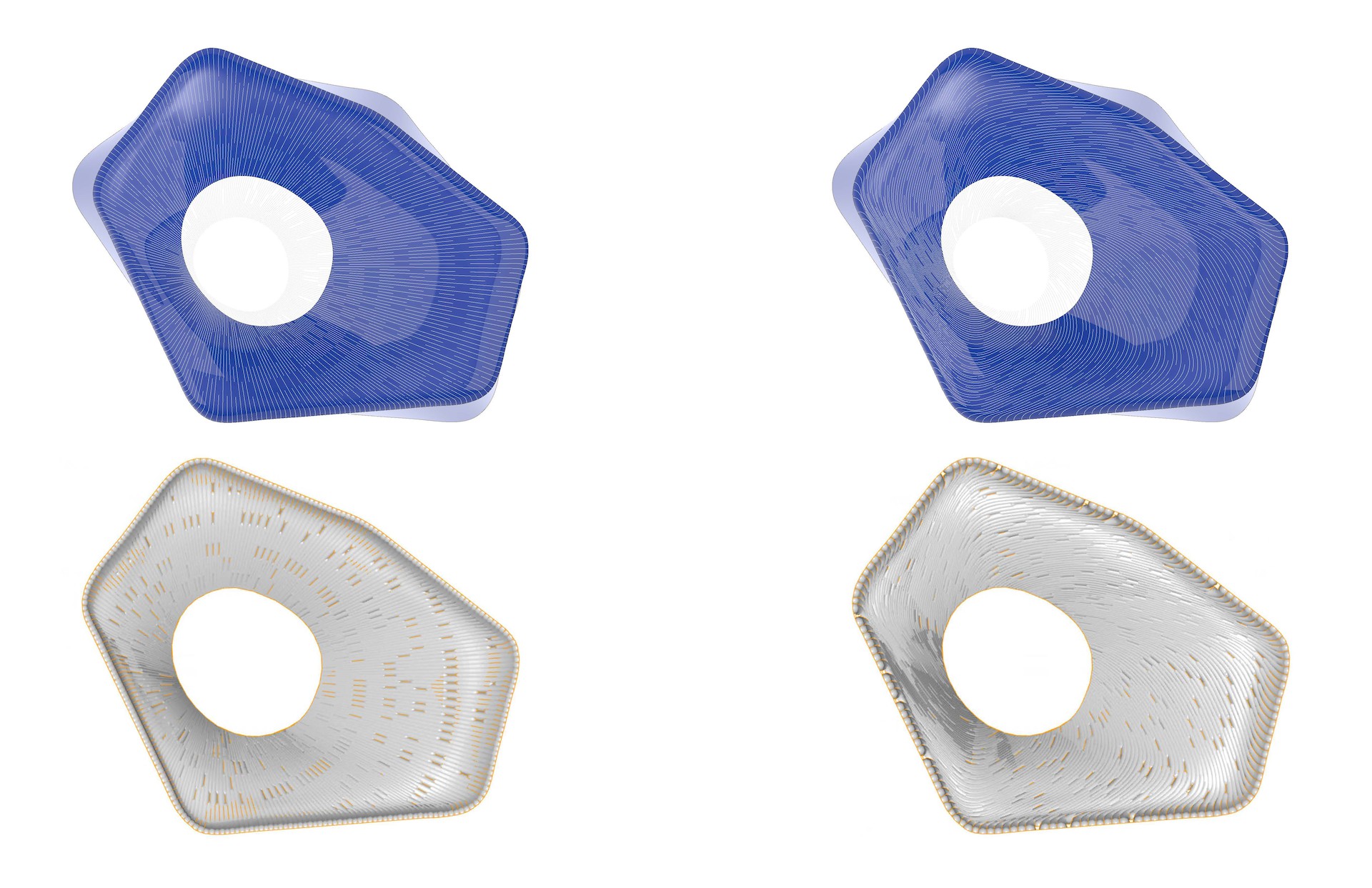
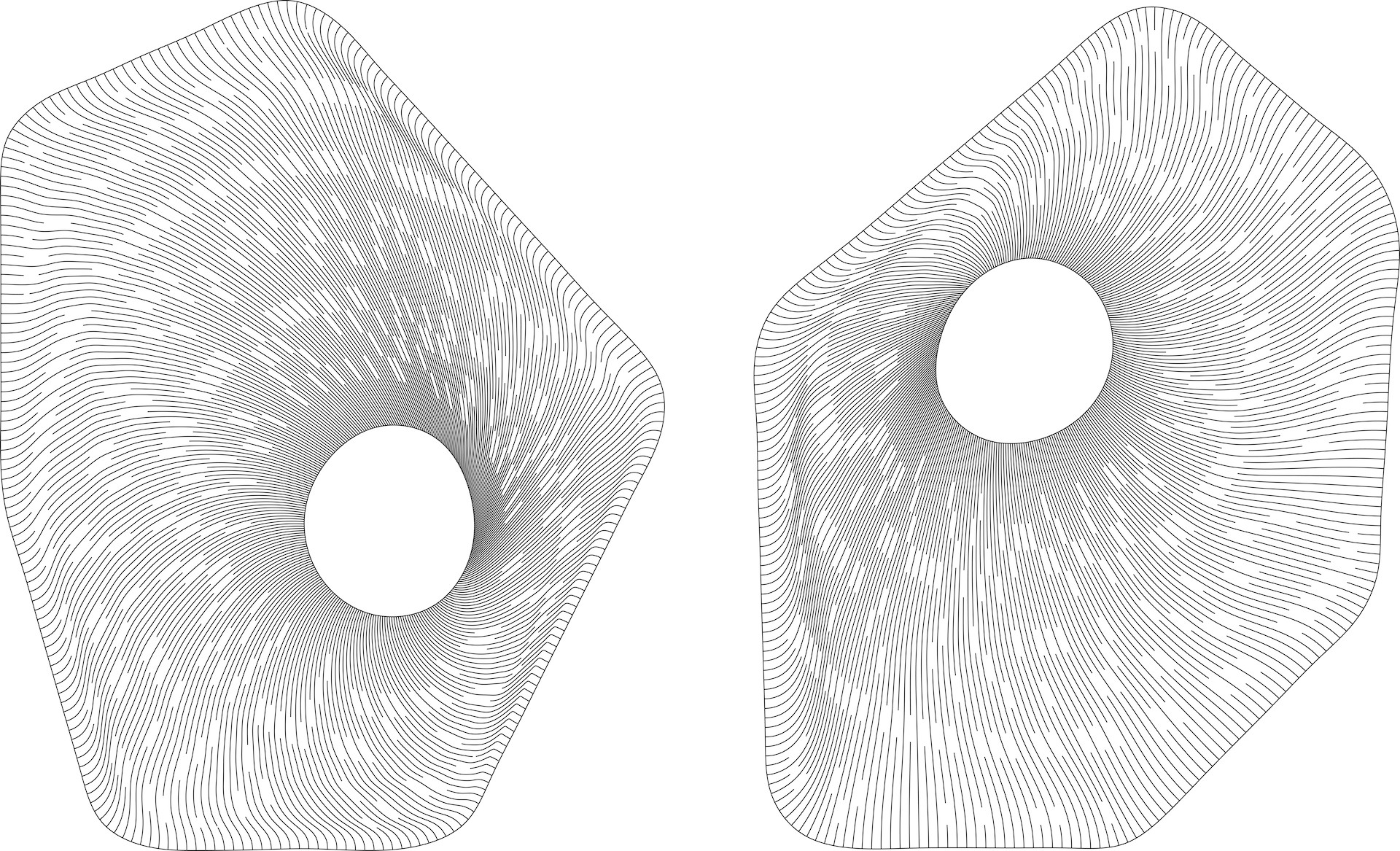
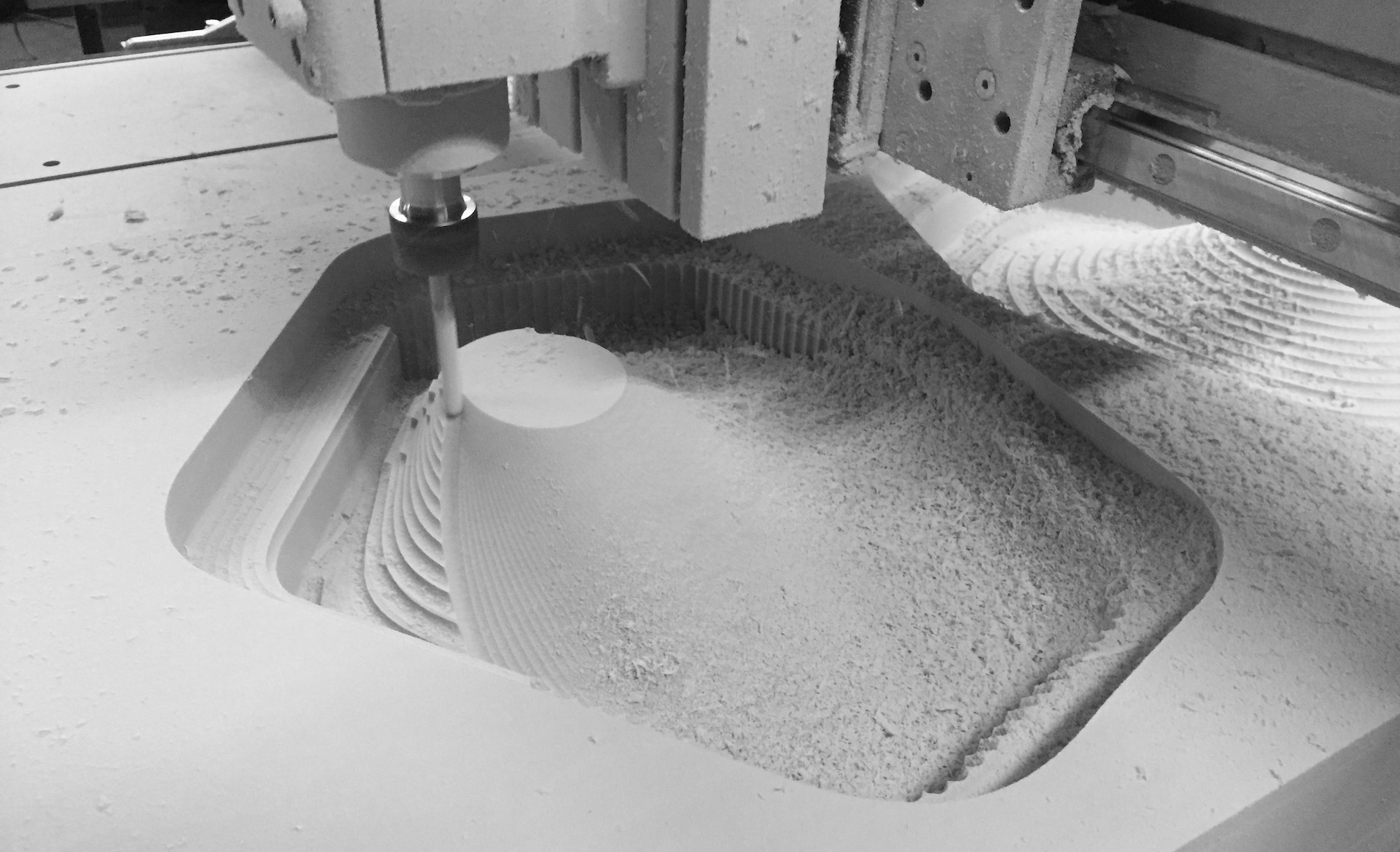
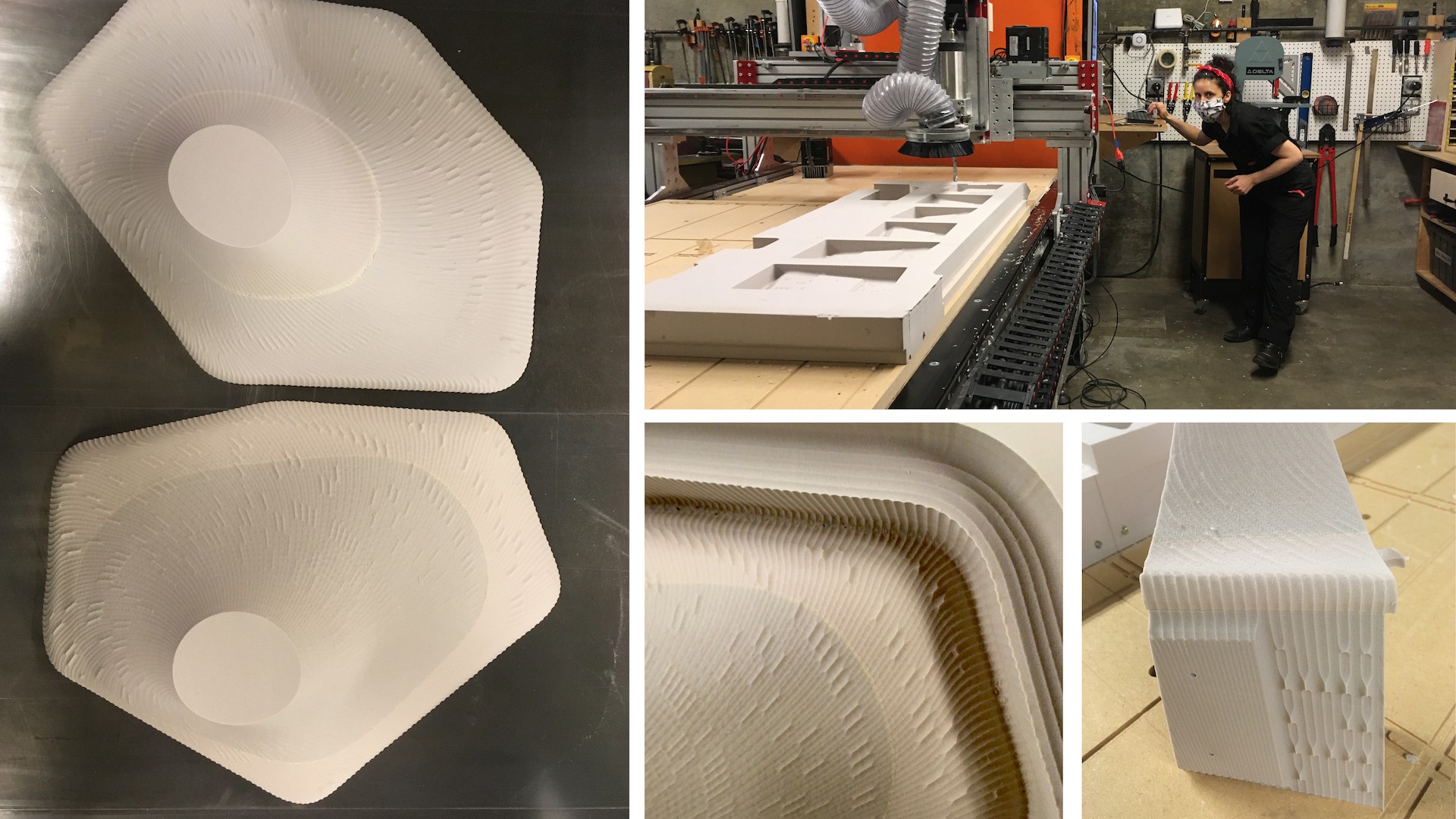
Images by Evgeniya Plotnikova / LMN
After understanding the constraints of the slip casting process we developed the geometry of the module to live just at the edge of what is possible. We structured the mold to meet the needs of the process while still meeting the intent of the design.
We made a full scale version of the module out of foam which was used as the positive for making the mold for the final slip cast pieces.
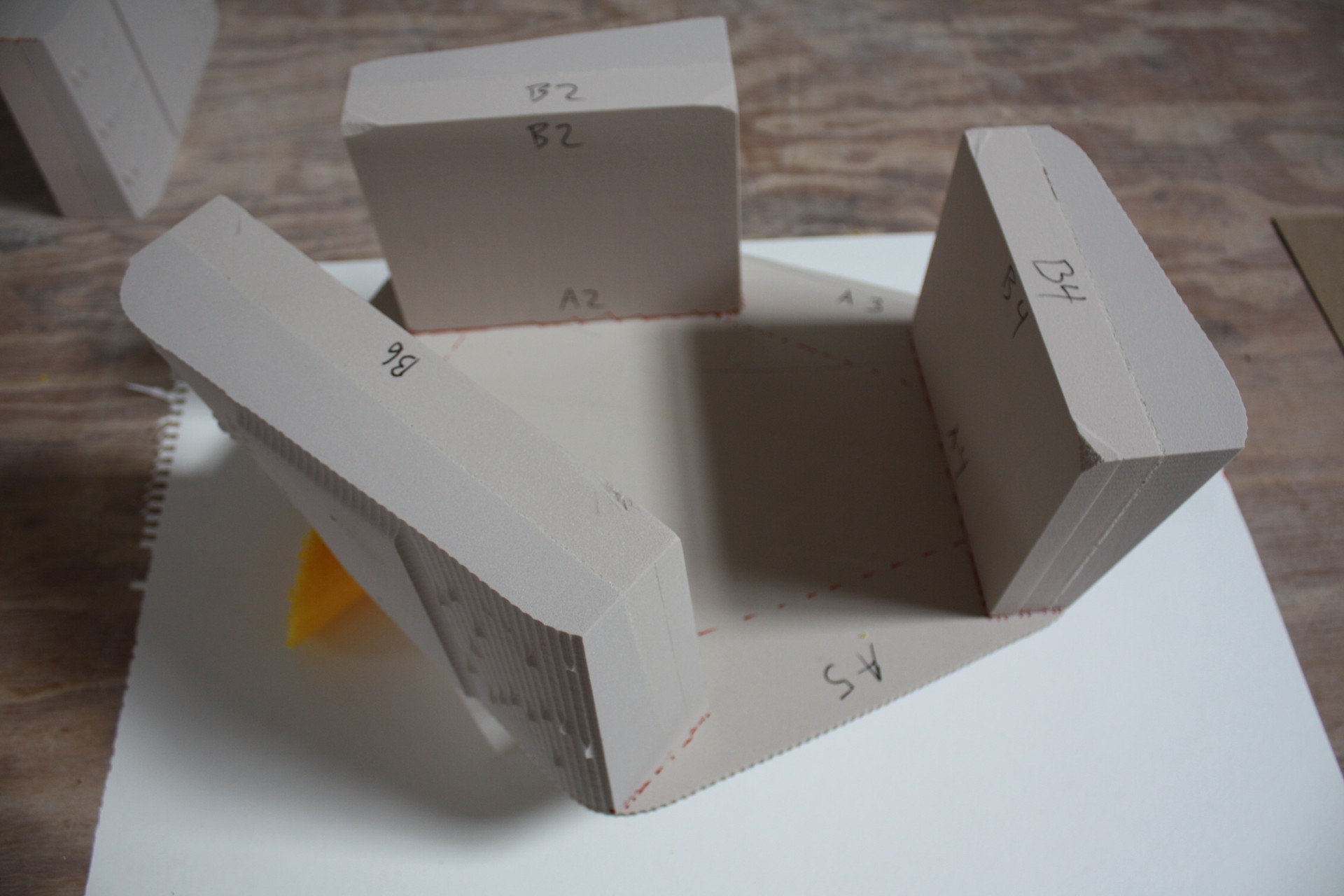
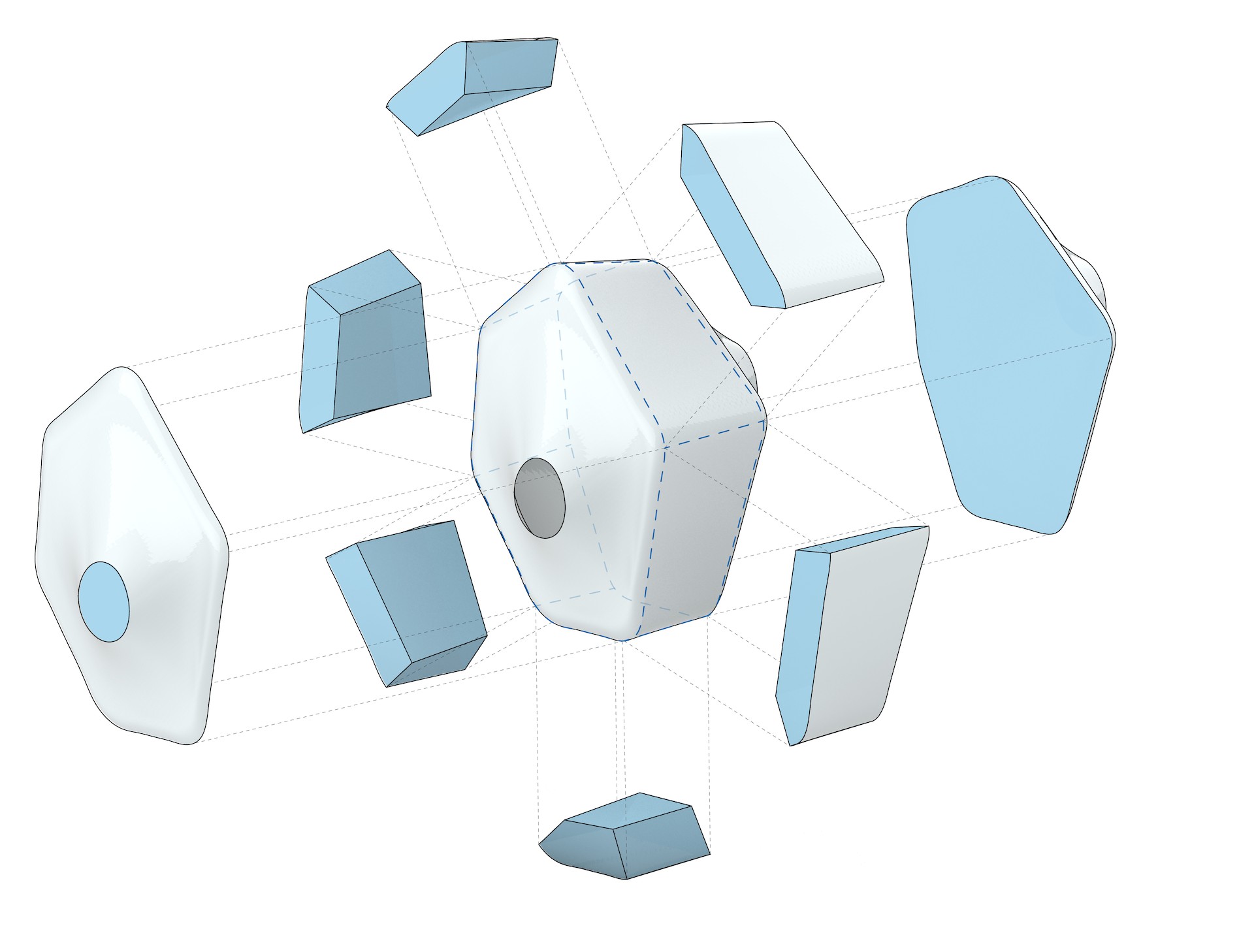
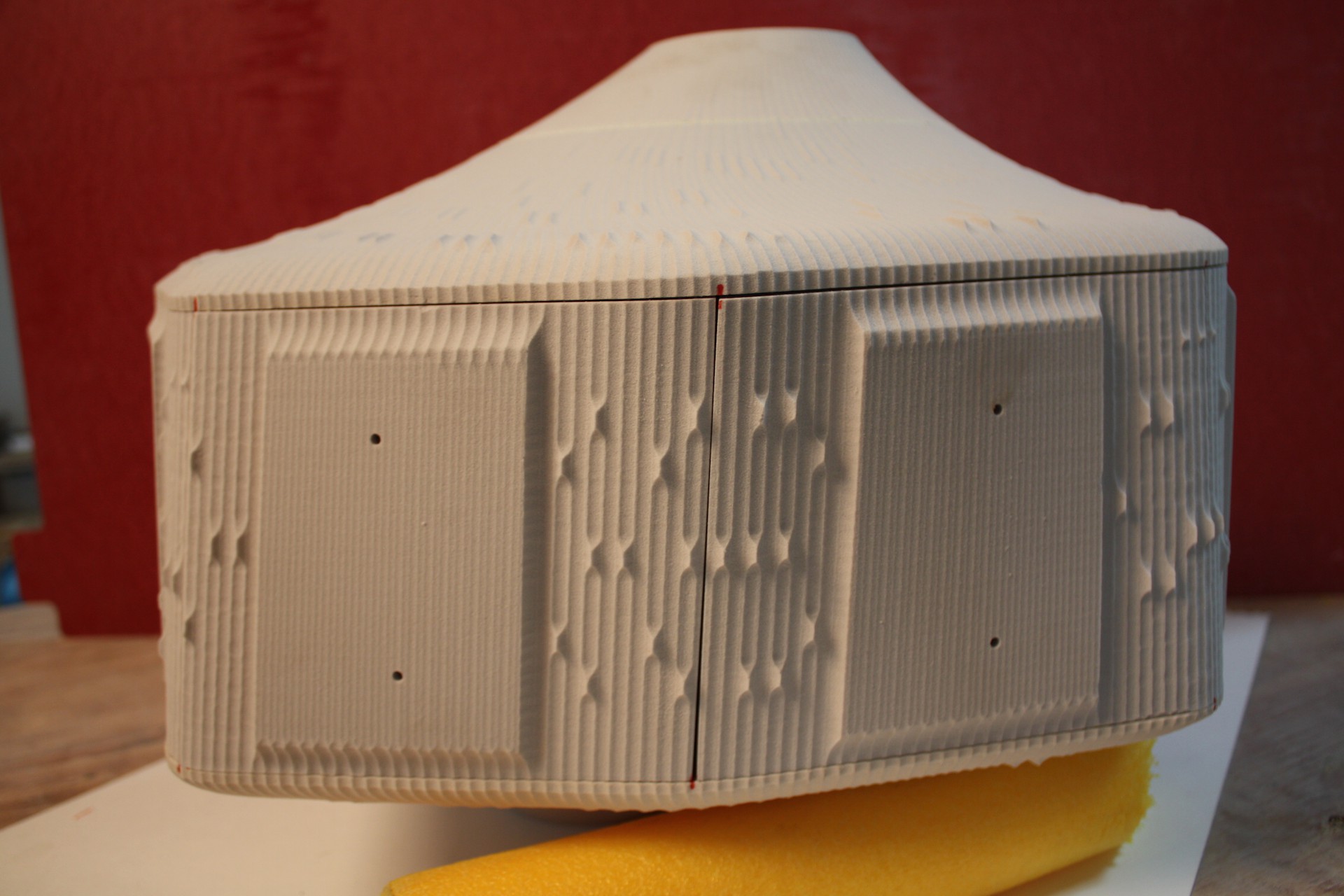
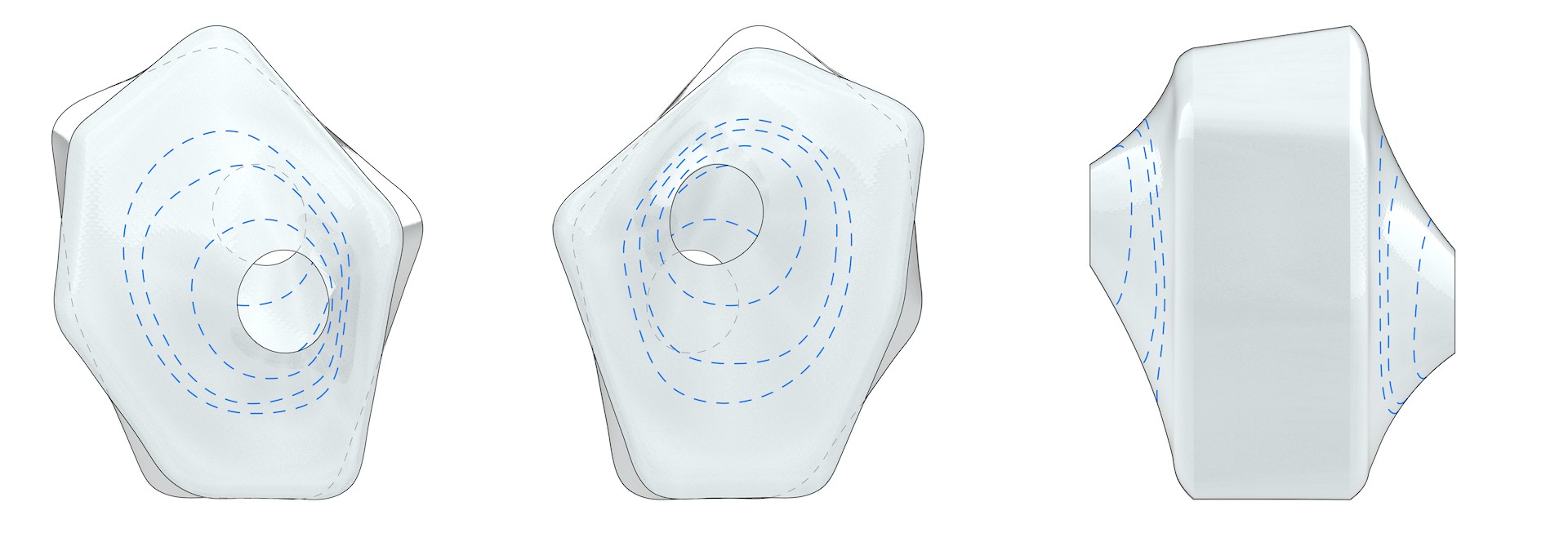
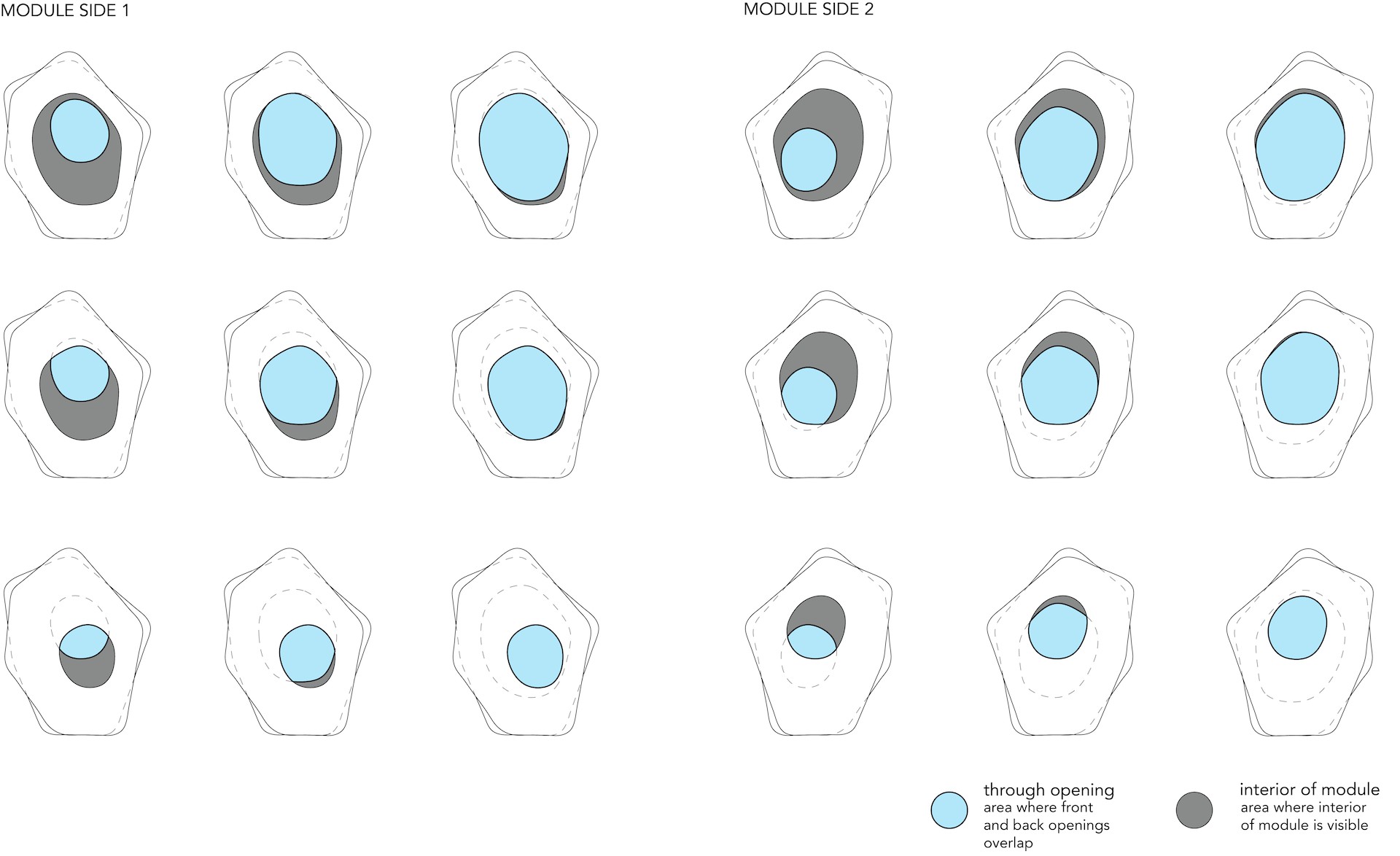
As part of the design process we had to work through a solution for how the modules connect to each other. We were able to achieve visual variability by rotating the single module to create a field.
This operation required the design and production of 6 unique spacers. We designed and fabricated 3D printed molds. Cast silicone spacers and simple hardware allowed for flexibility in aggregating the modules.
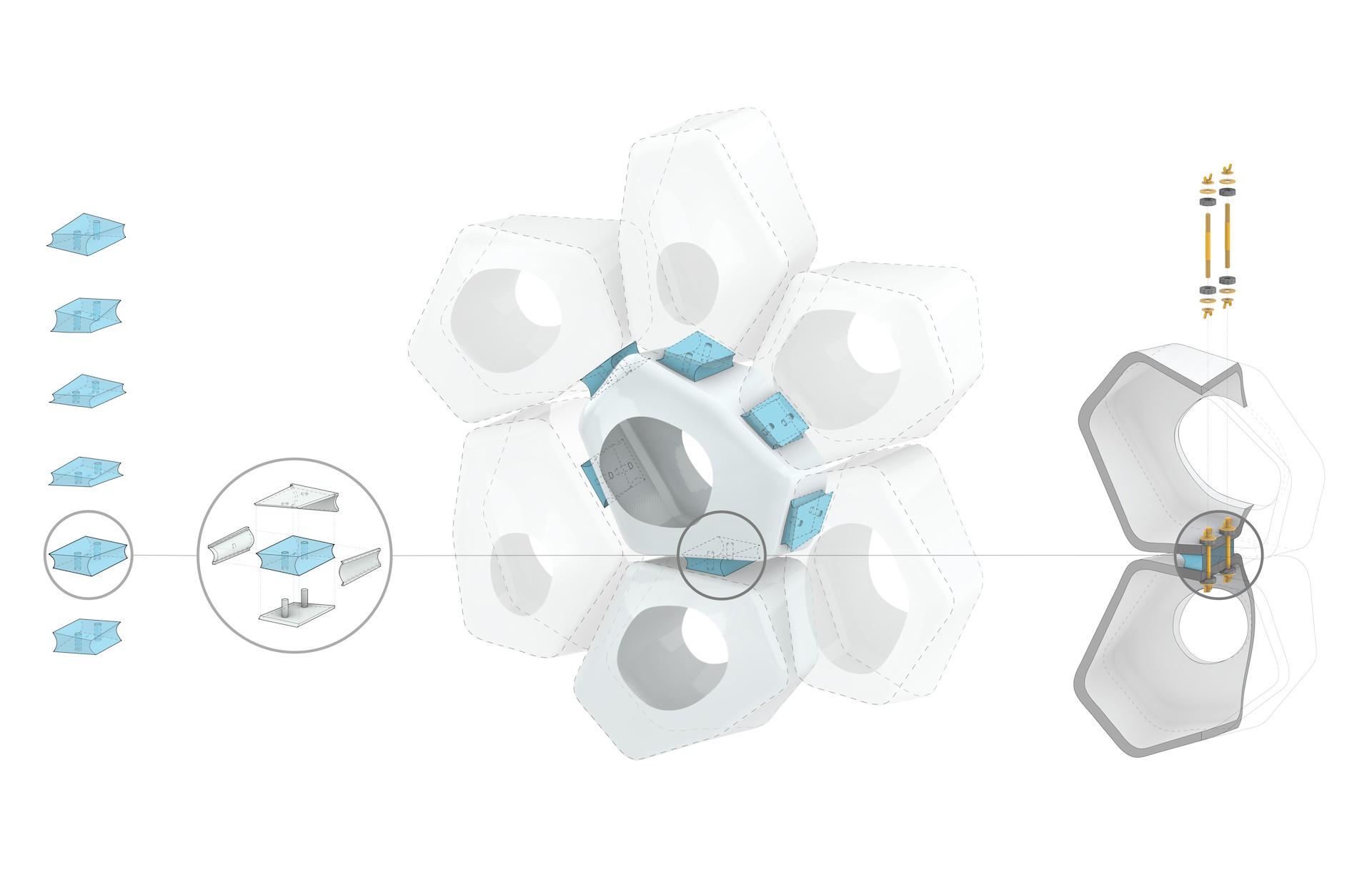
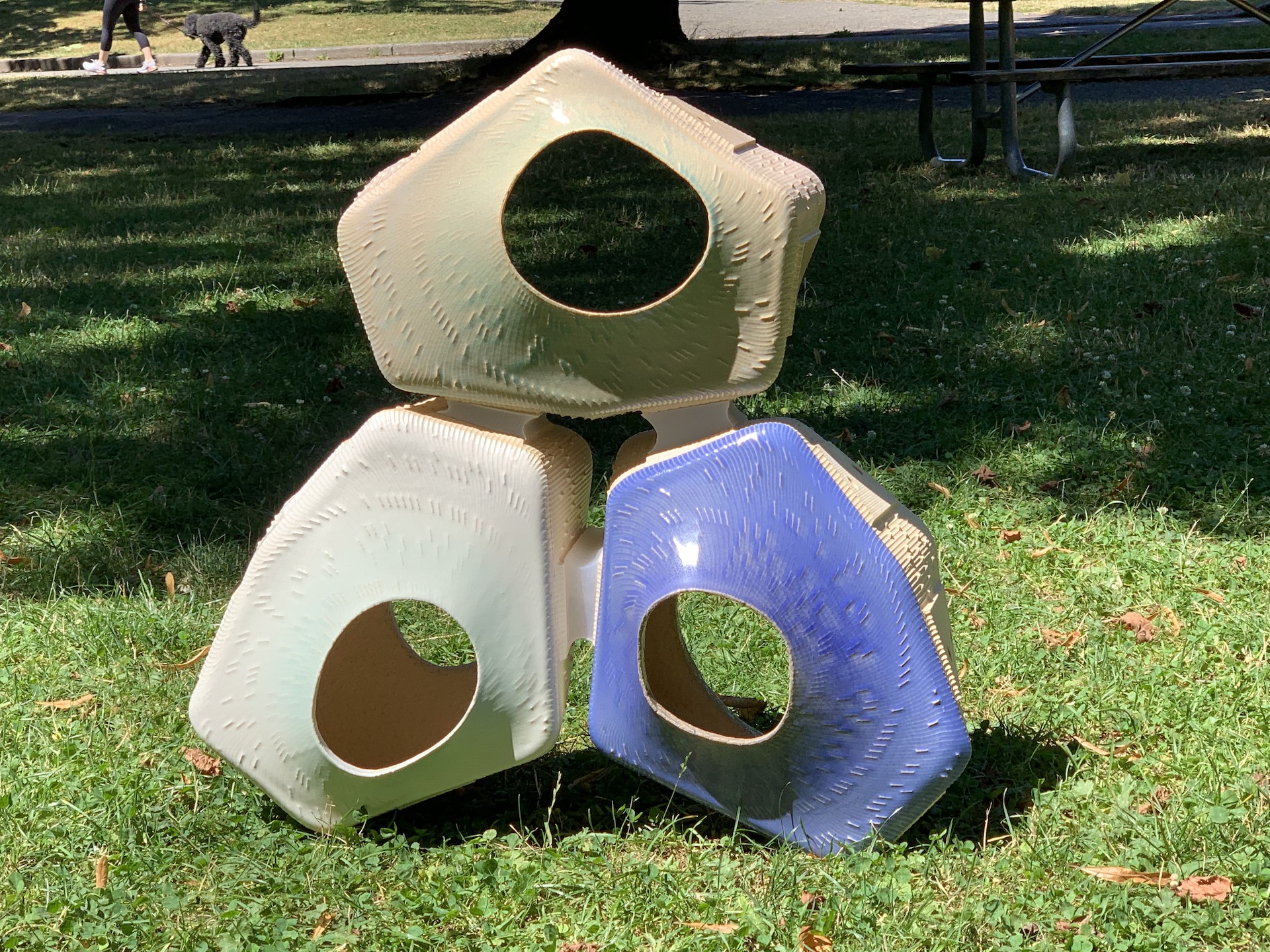
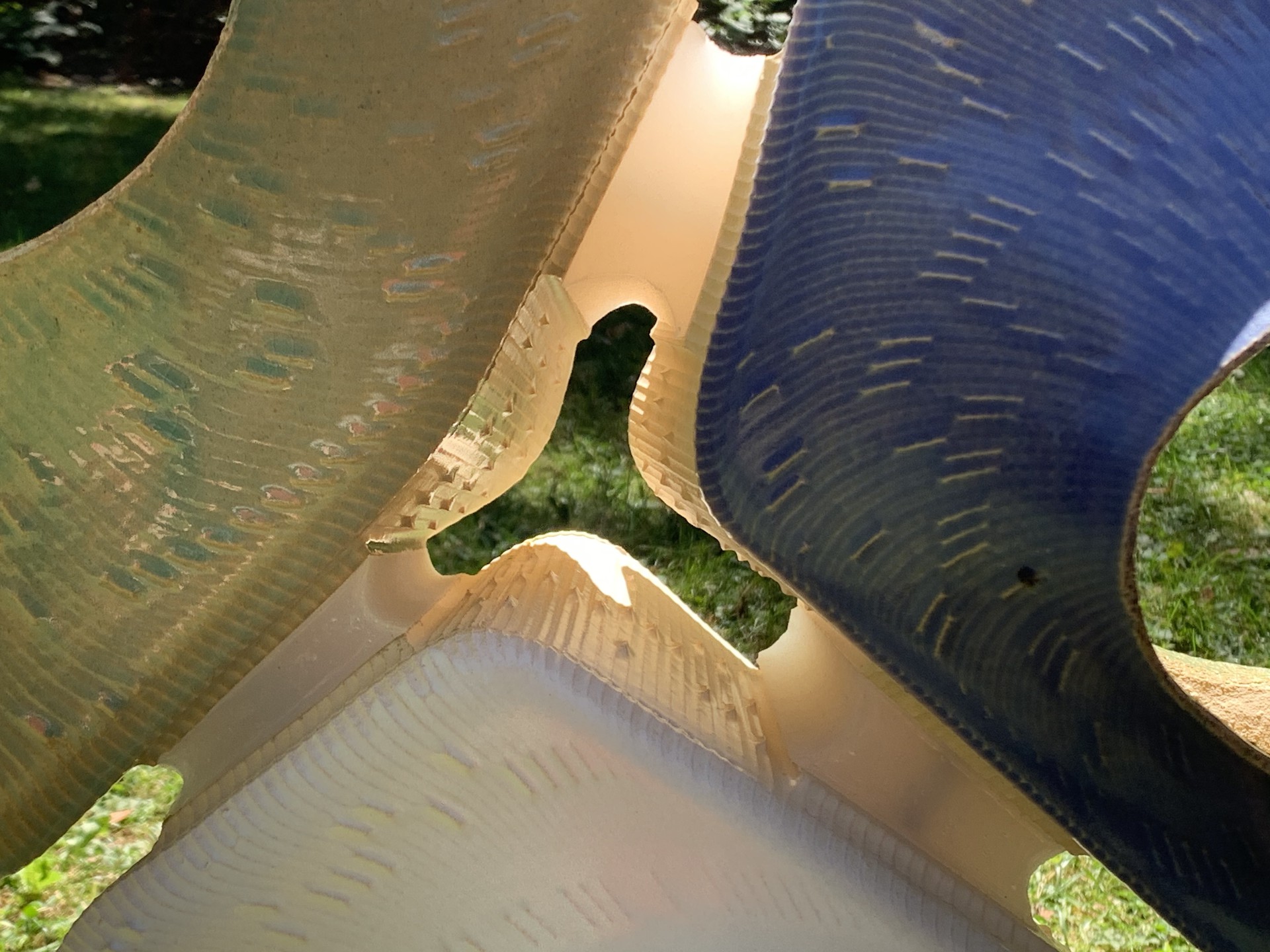
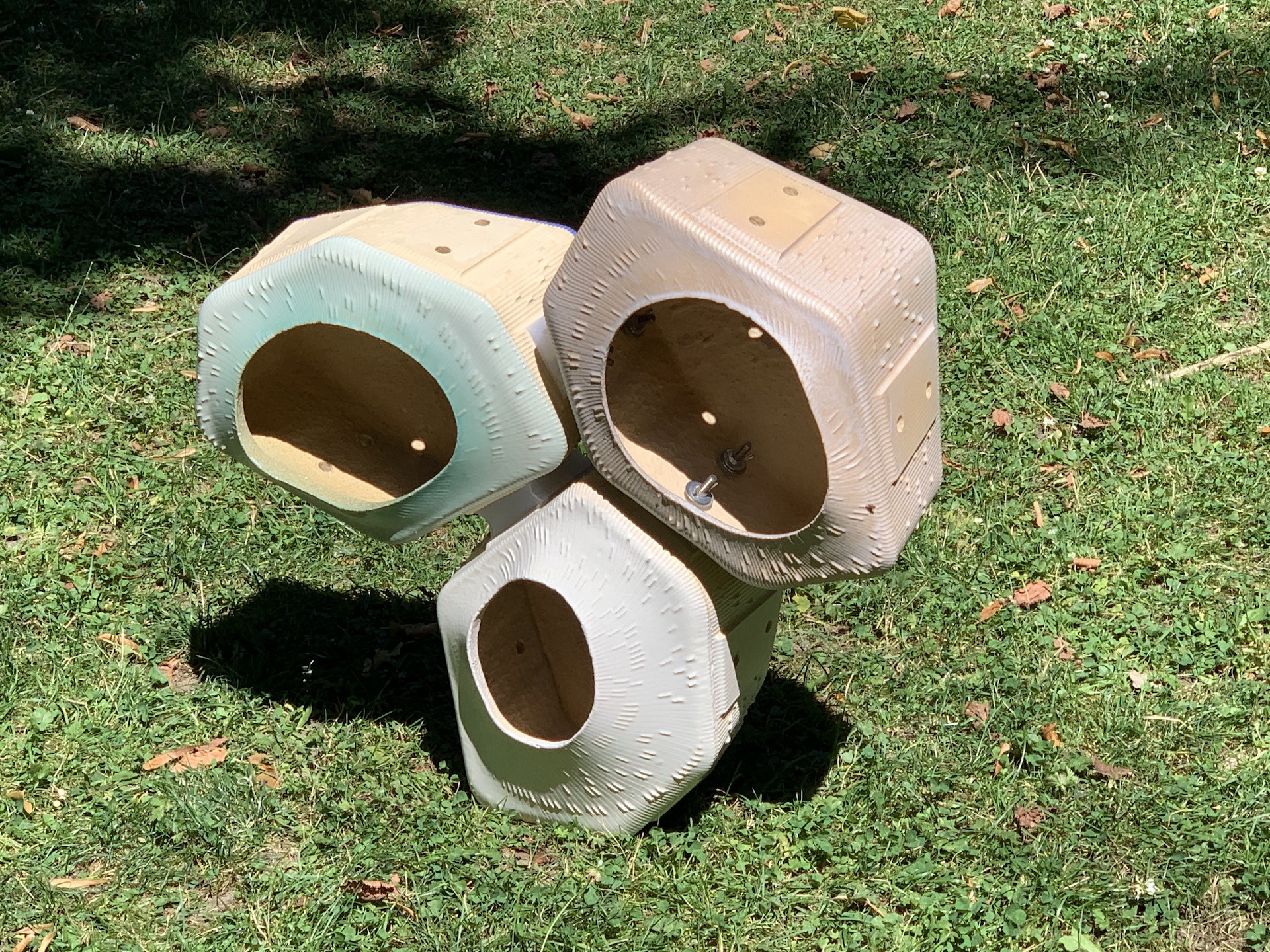
With the first few full modules we started to test various glaze applications to understand how the glaze, surface texture, and full geometry would work together.
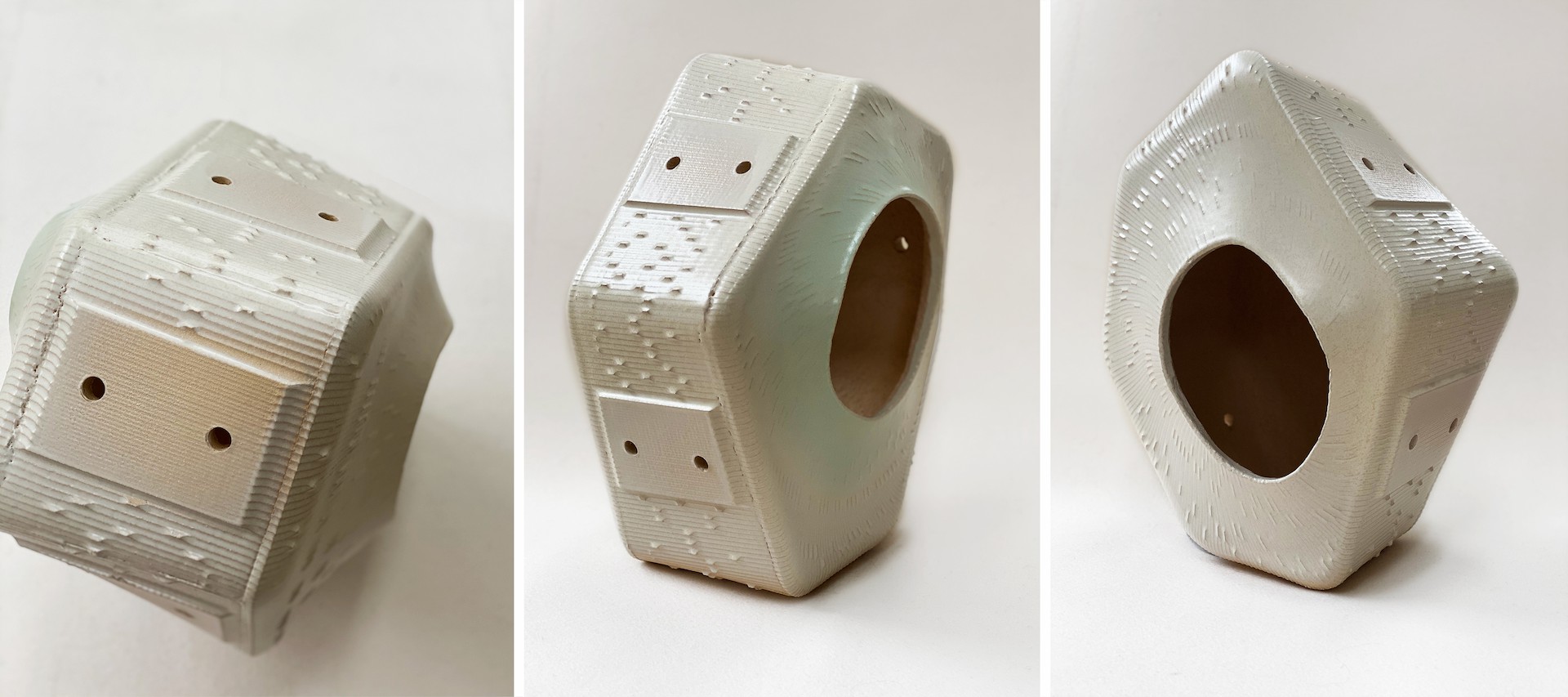
Images by Andy Brayman / The Matter Factory
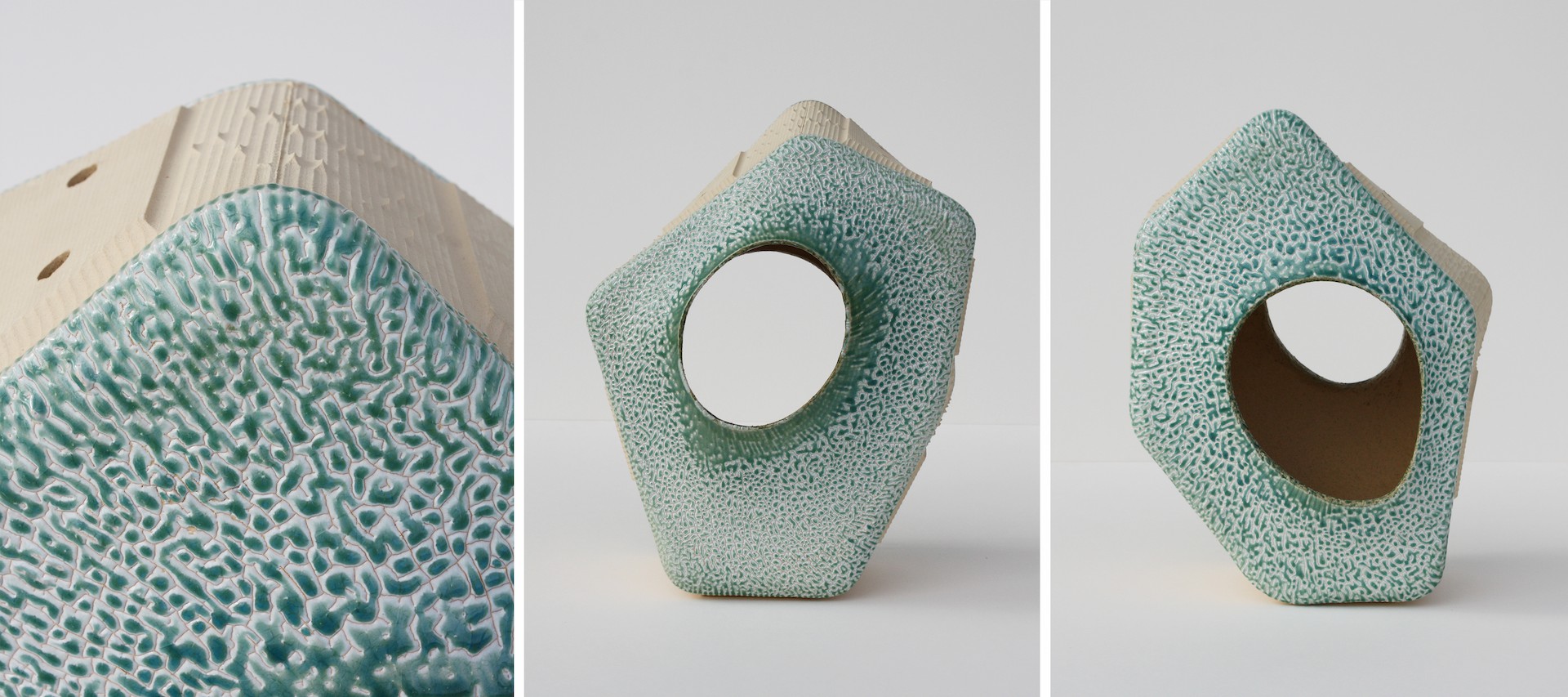
Images by Andy Brayman / The Matter Factory
We chose a crackle finish with minimal color, which we optimized for enhancing the geometry and texture of the design. The final module felt like it could be part of a natural landscape.
